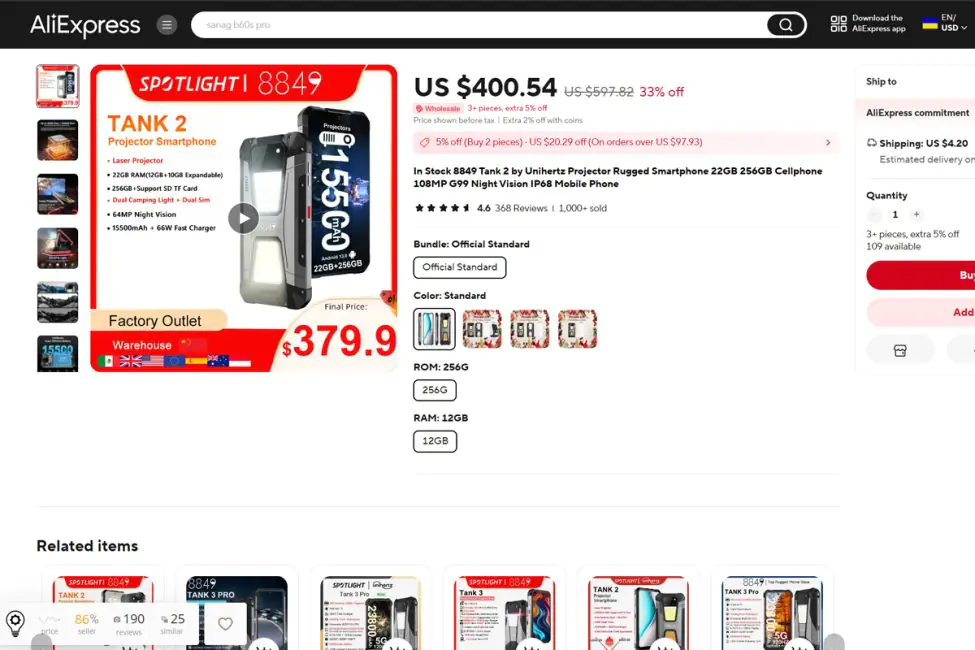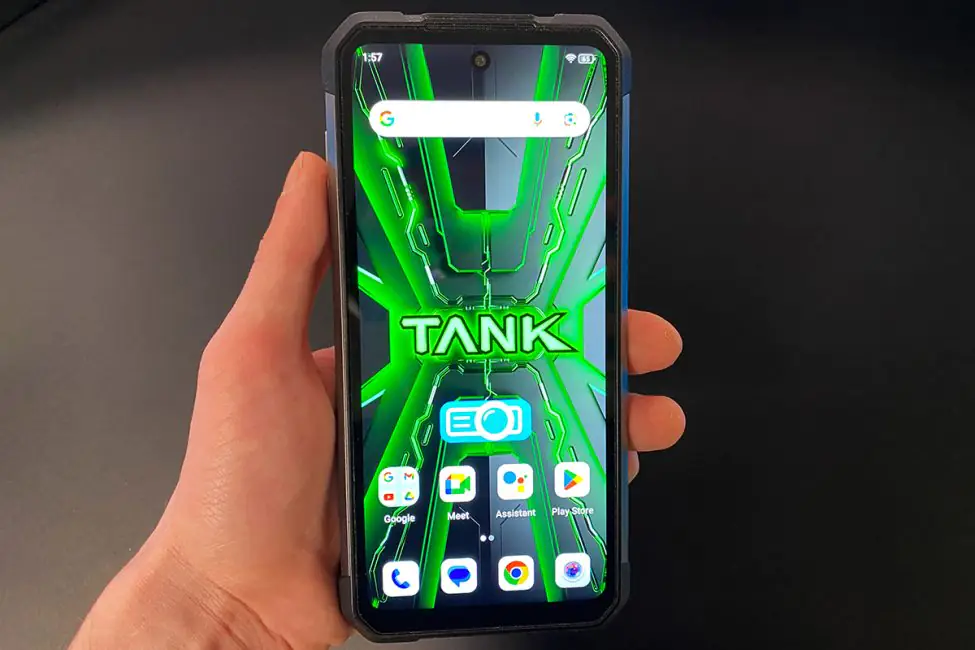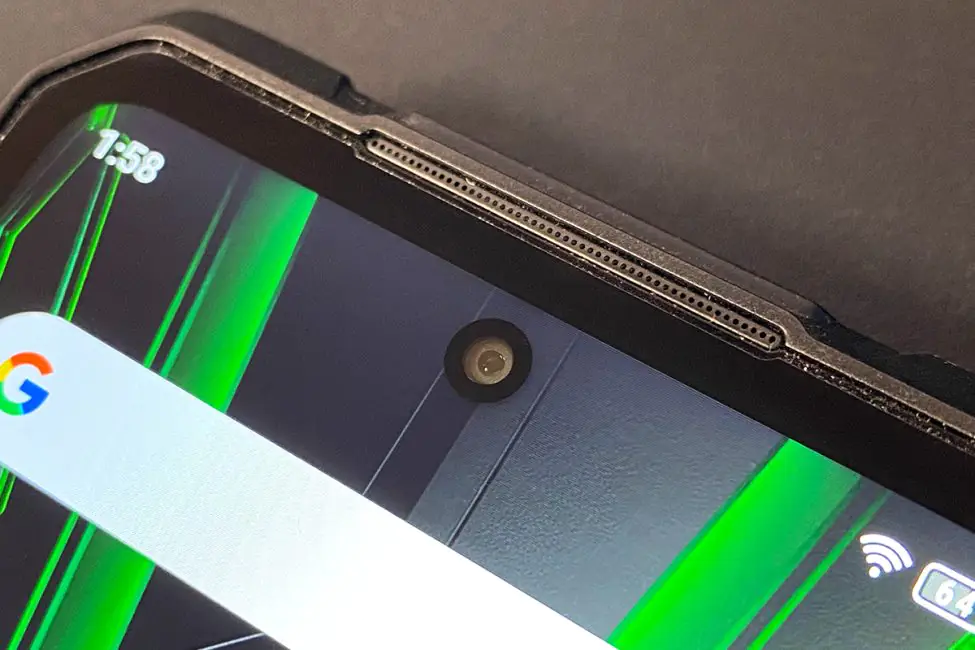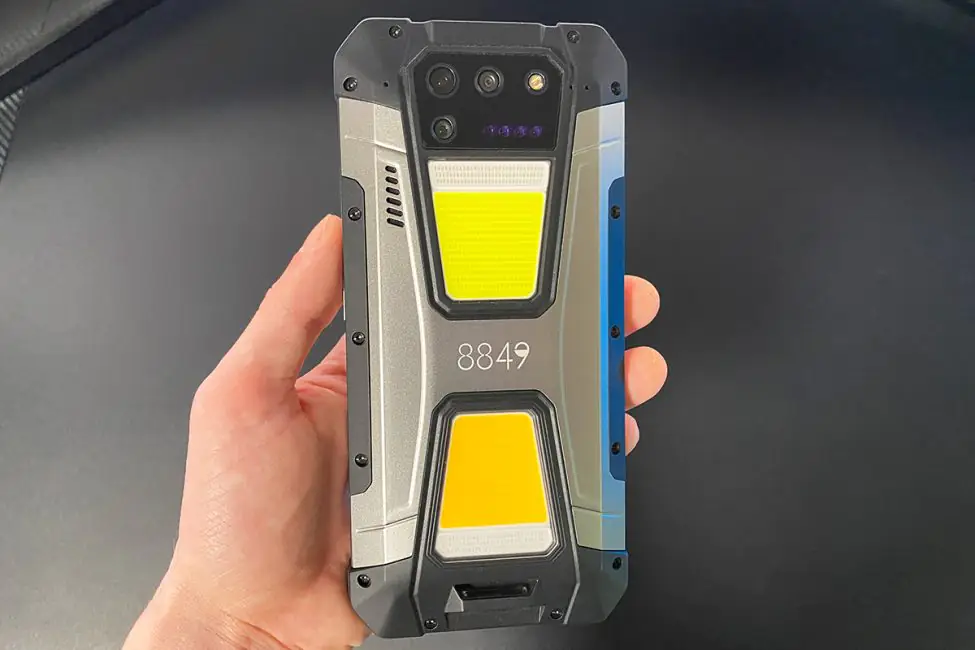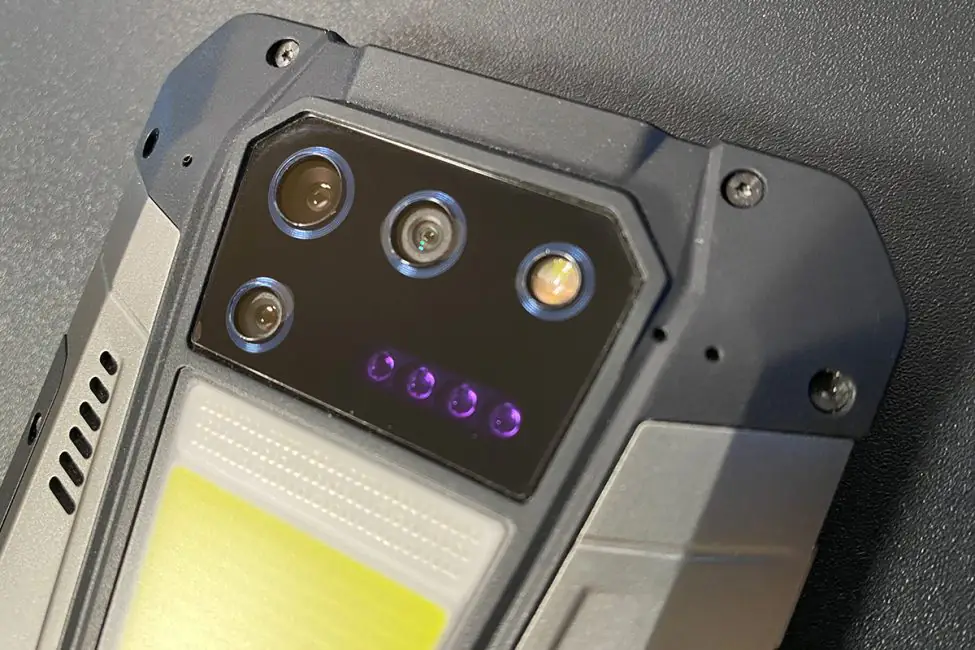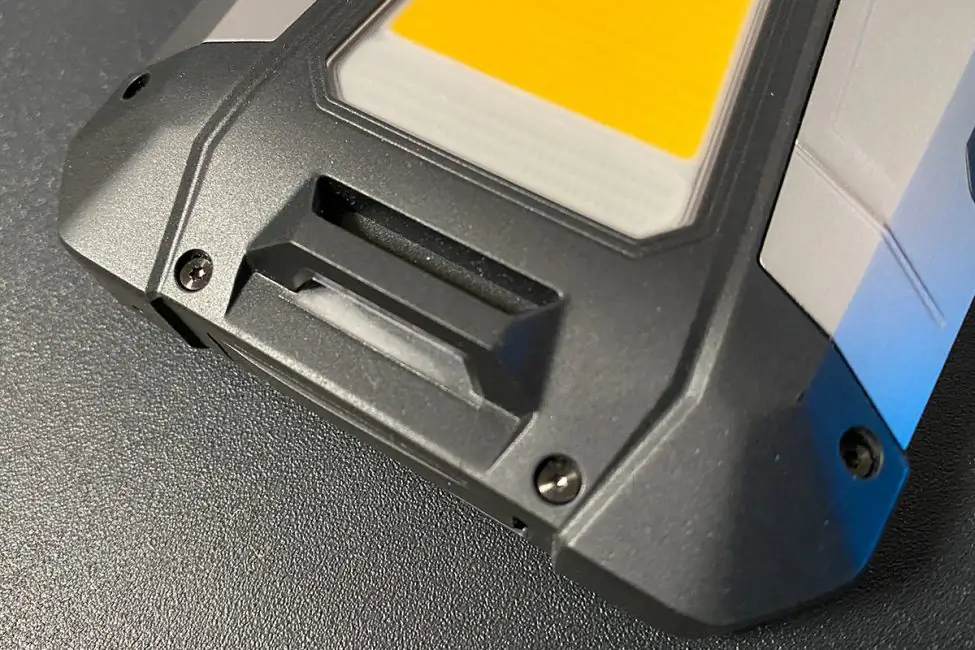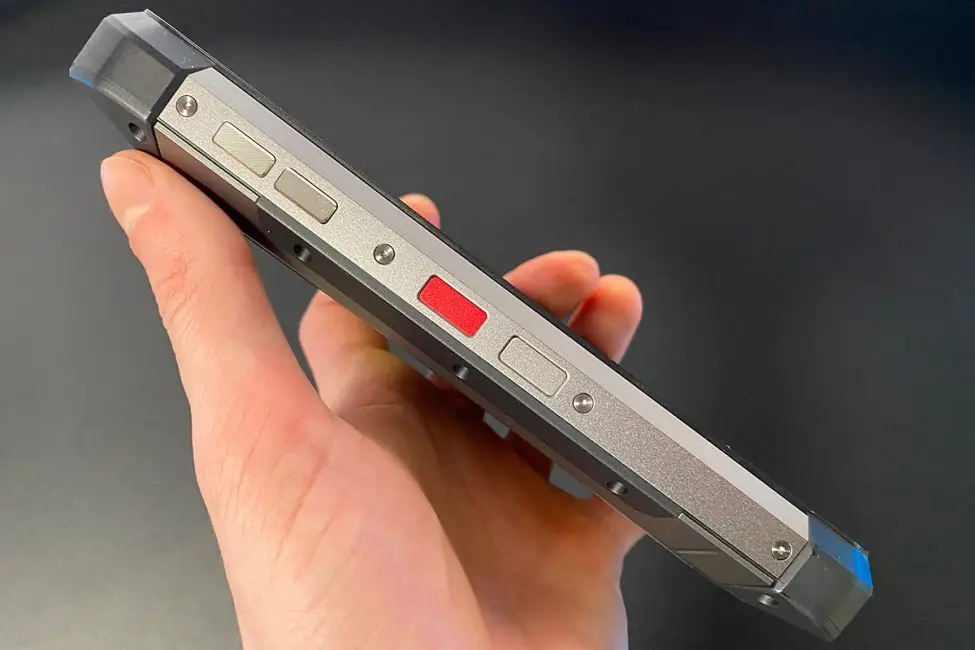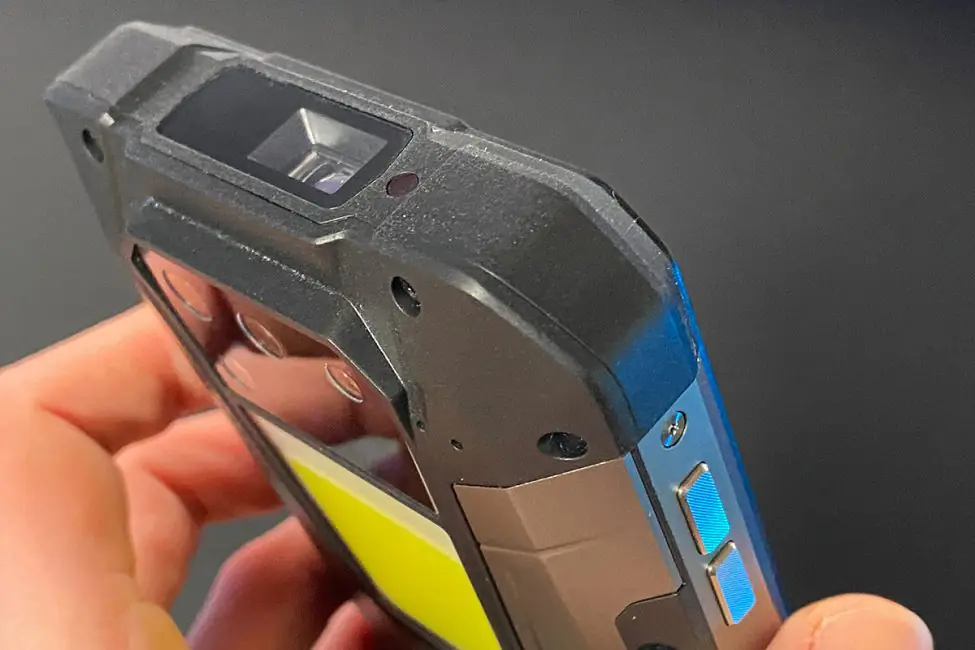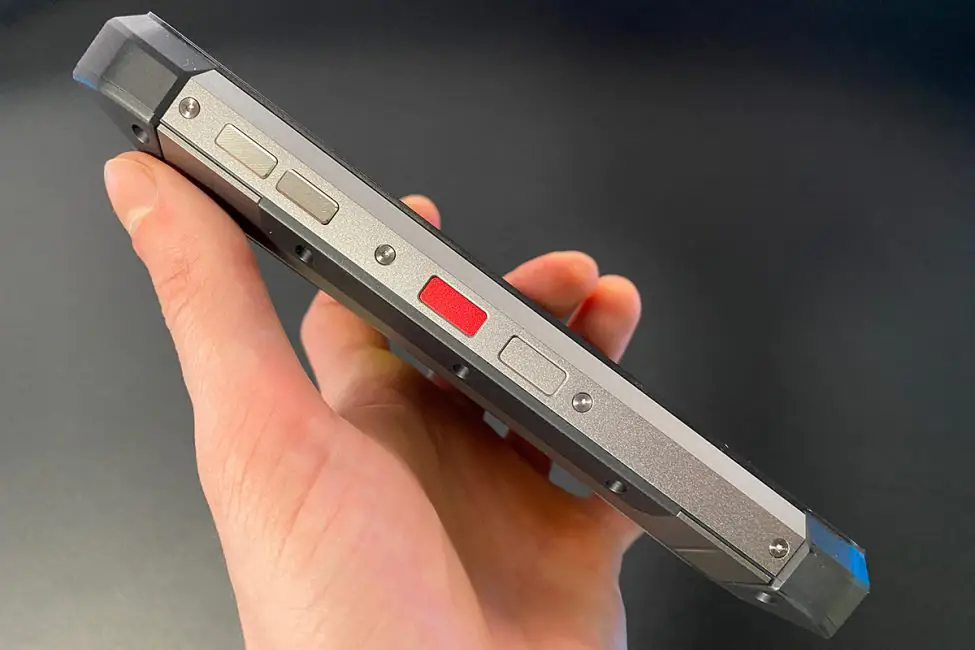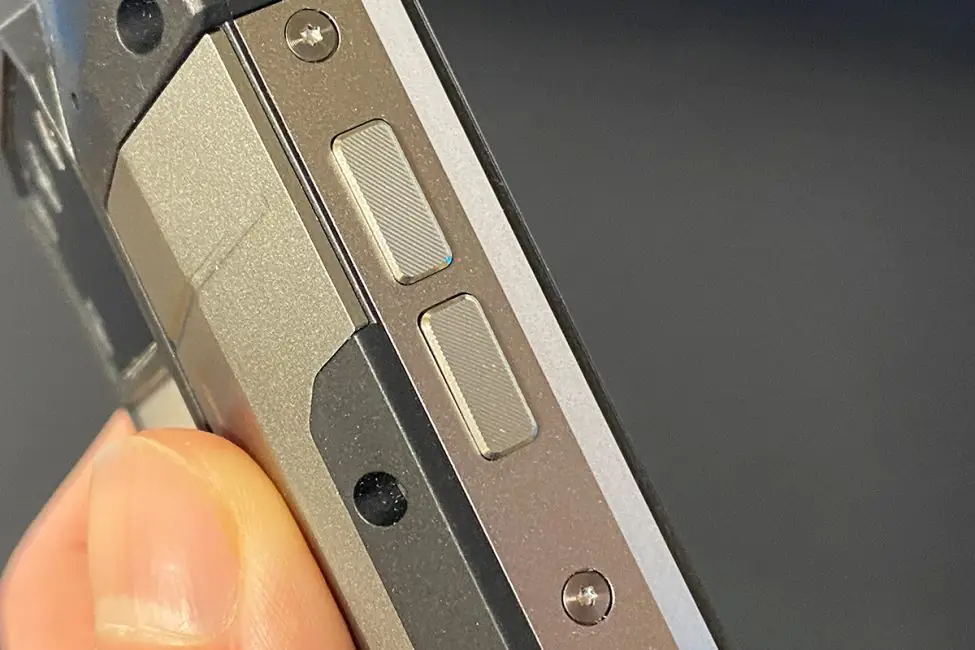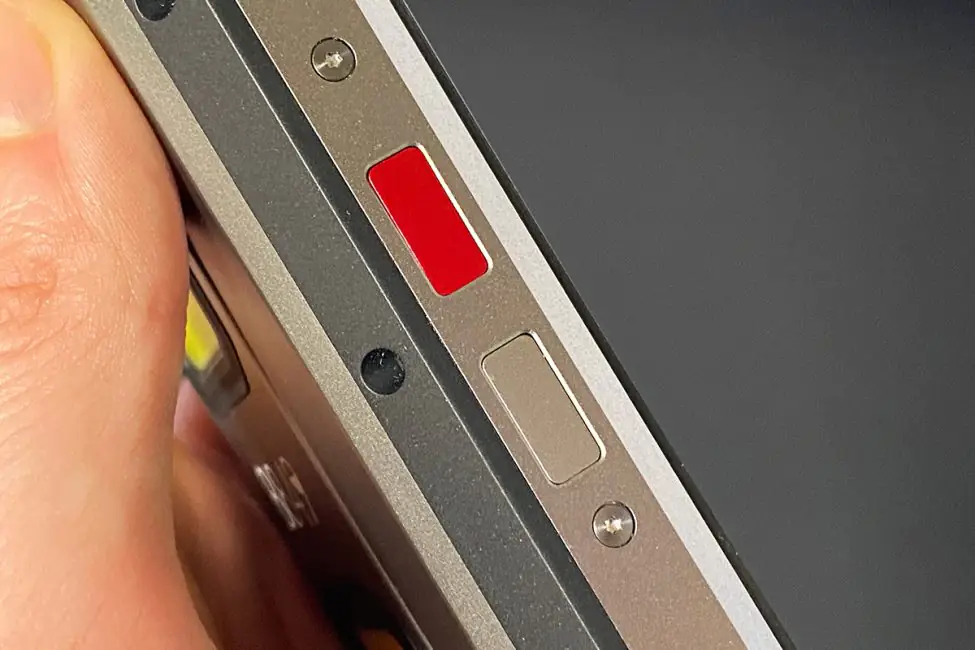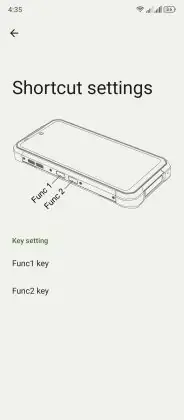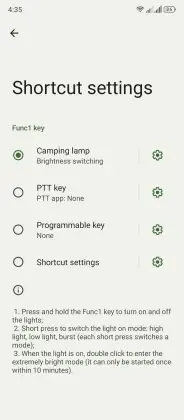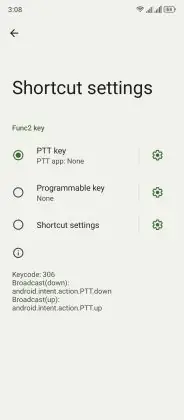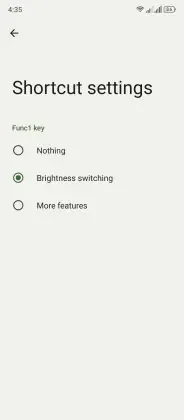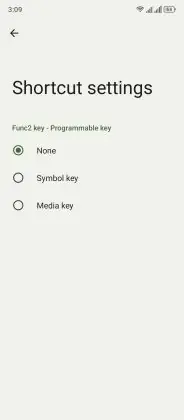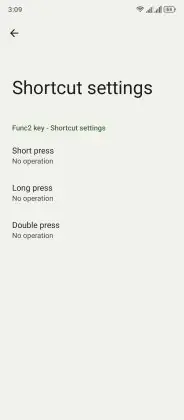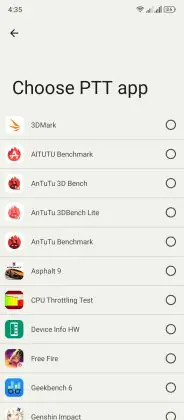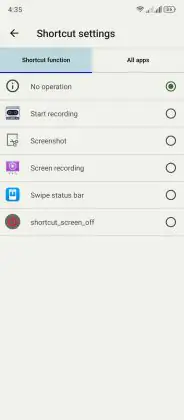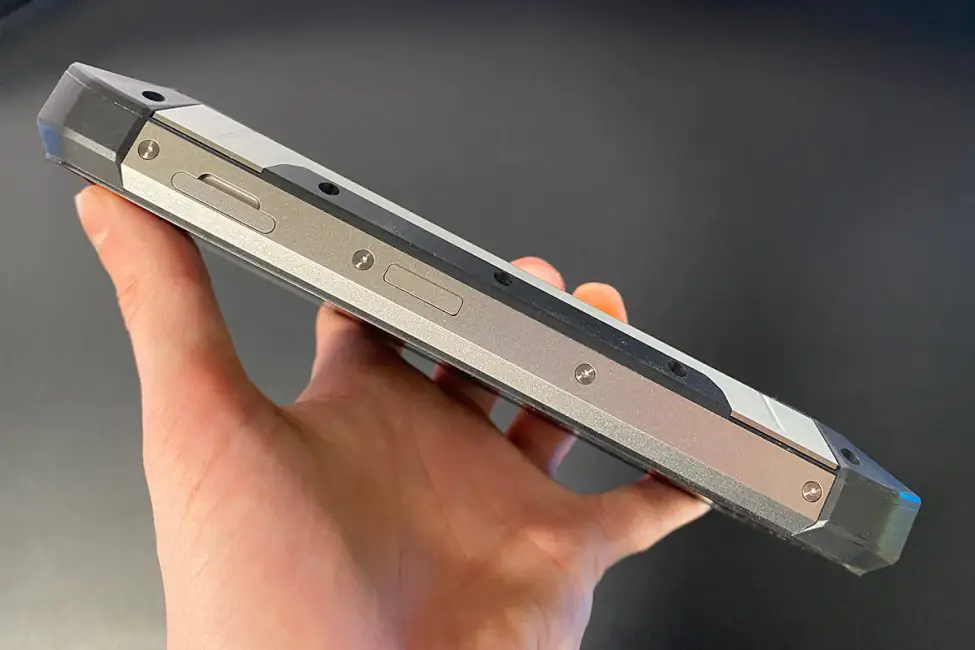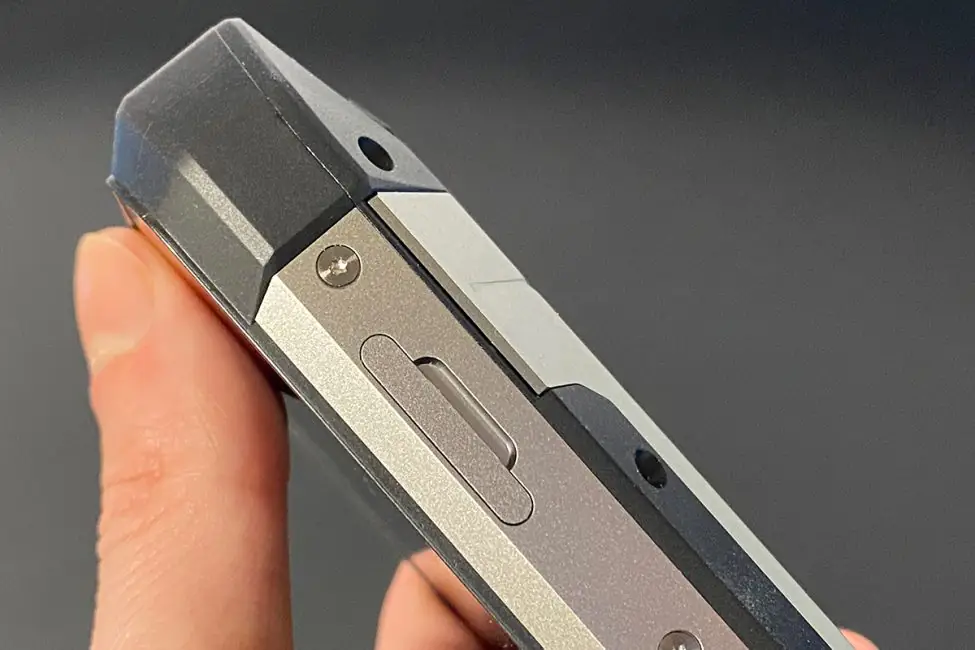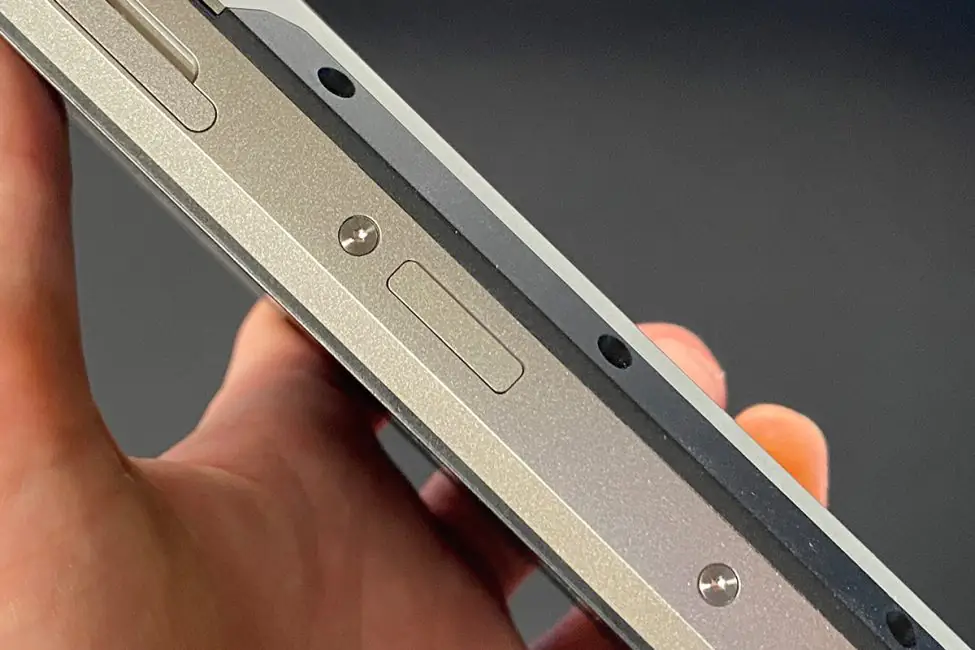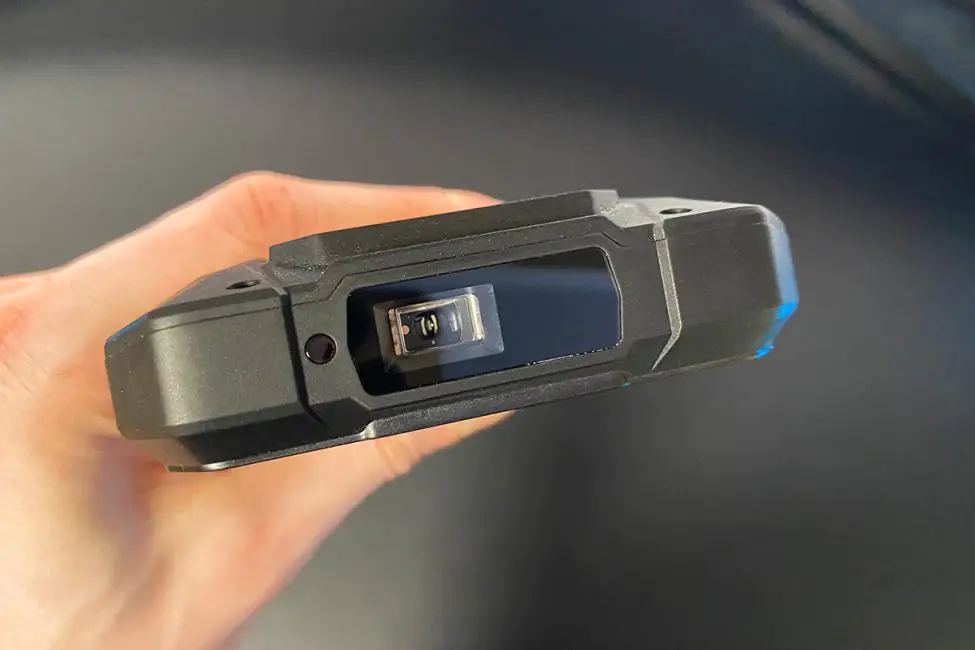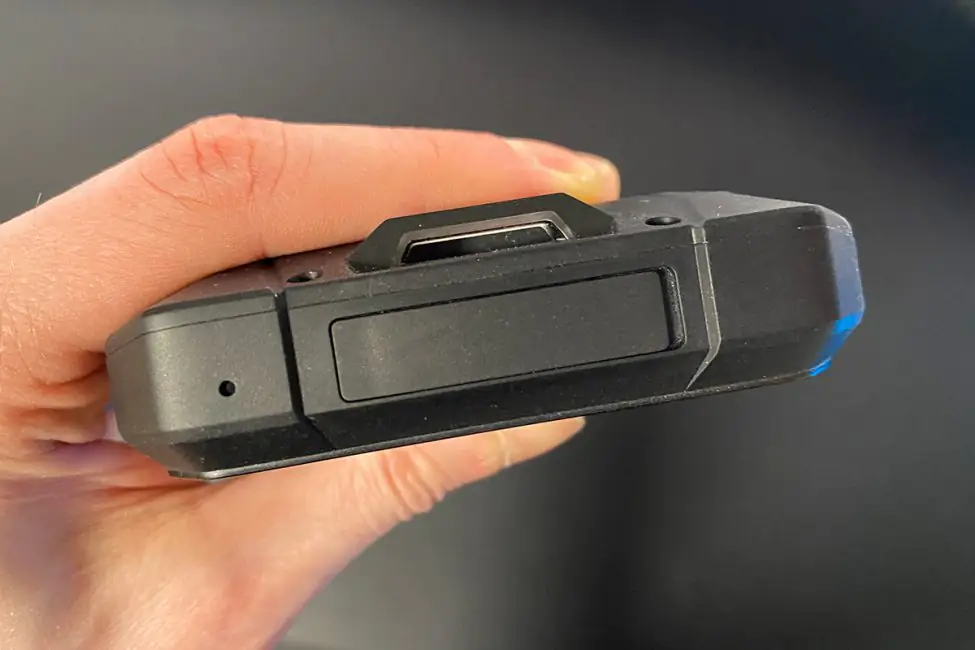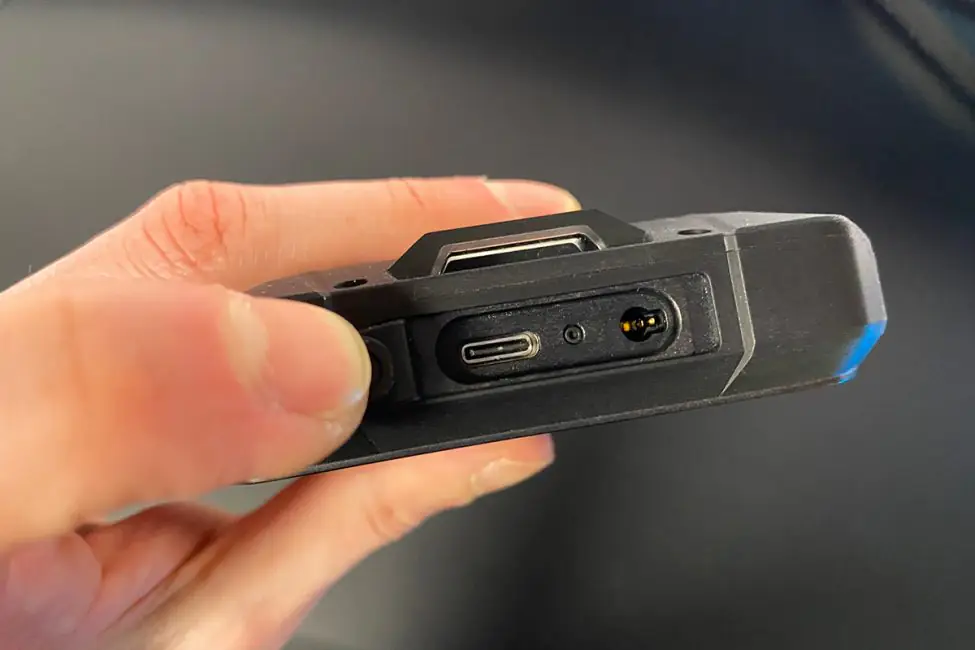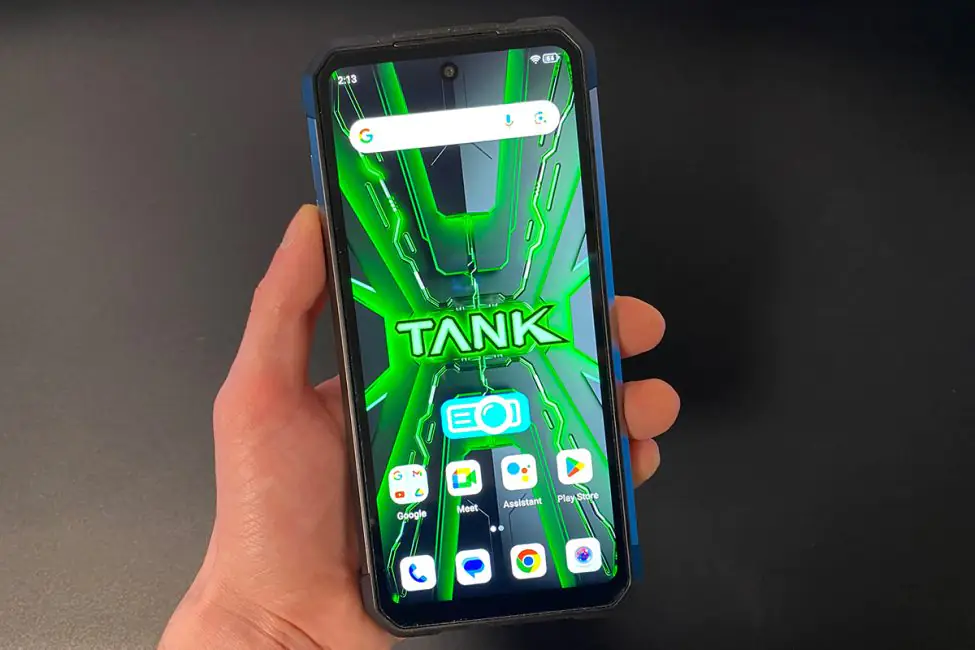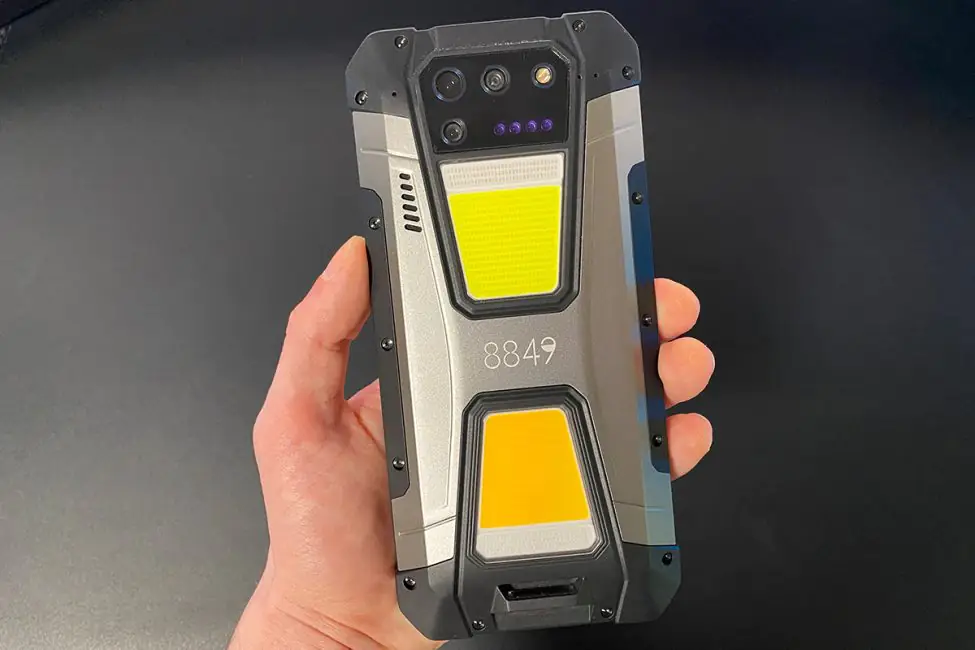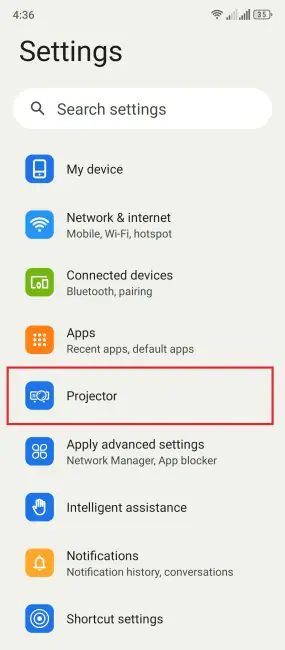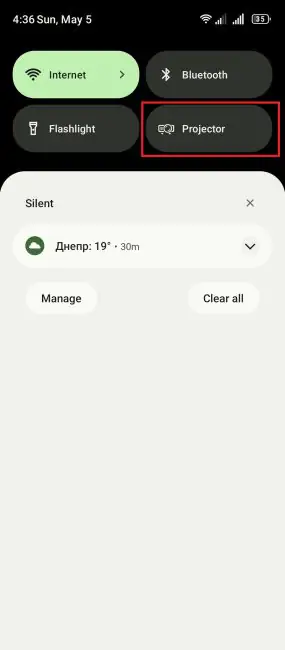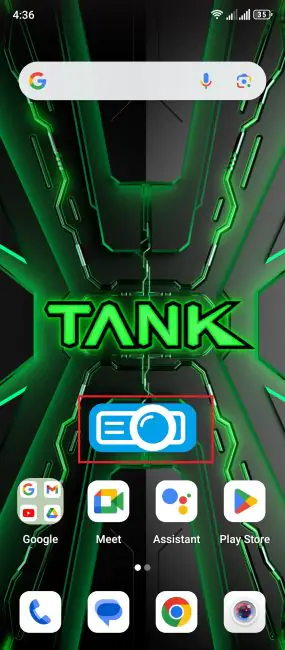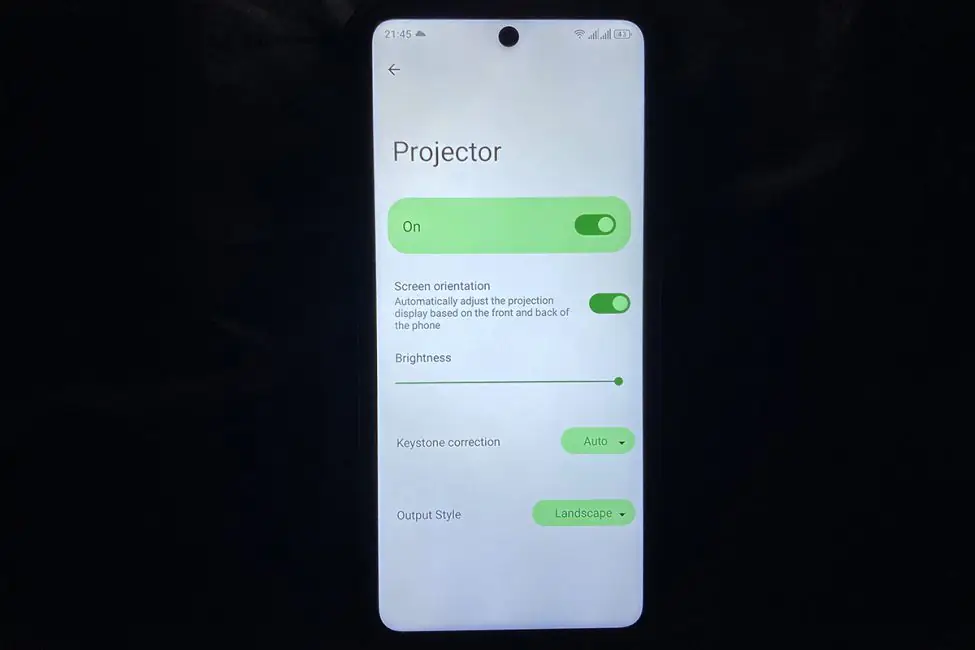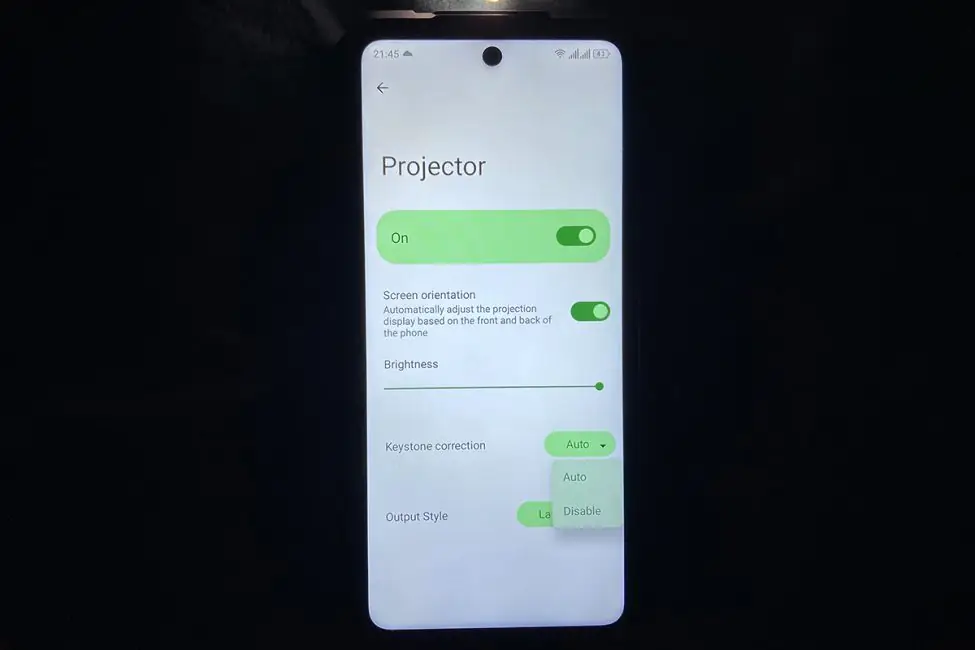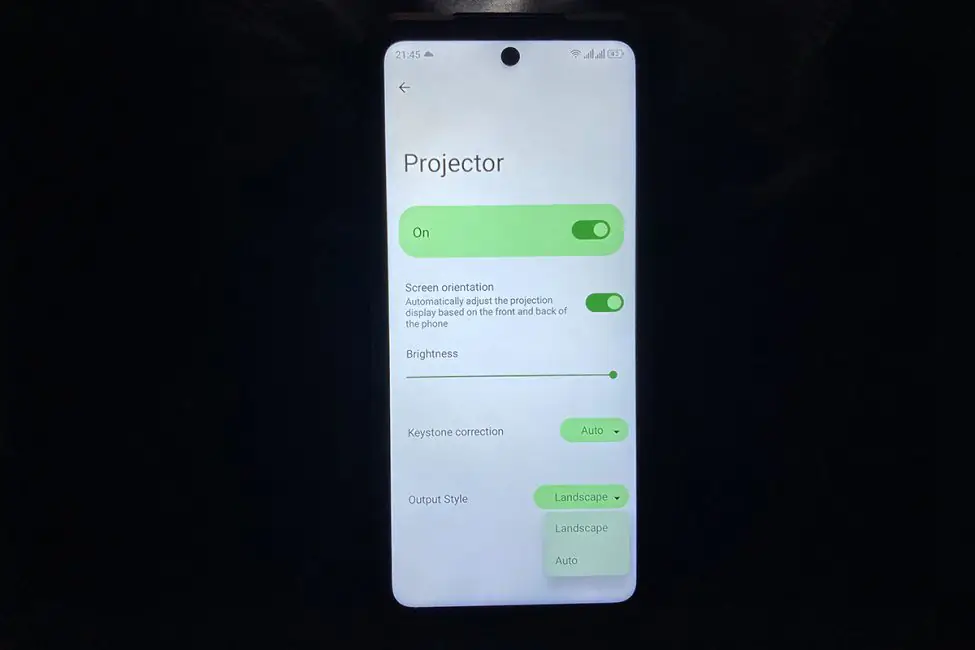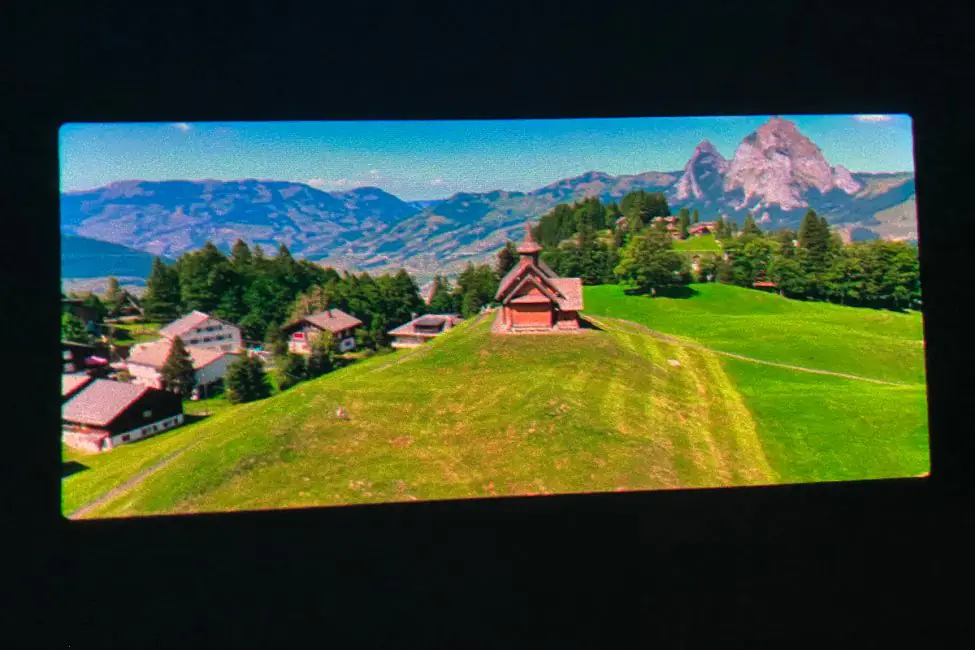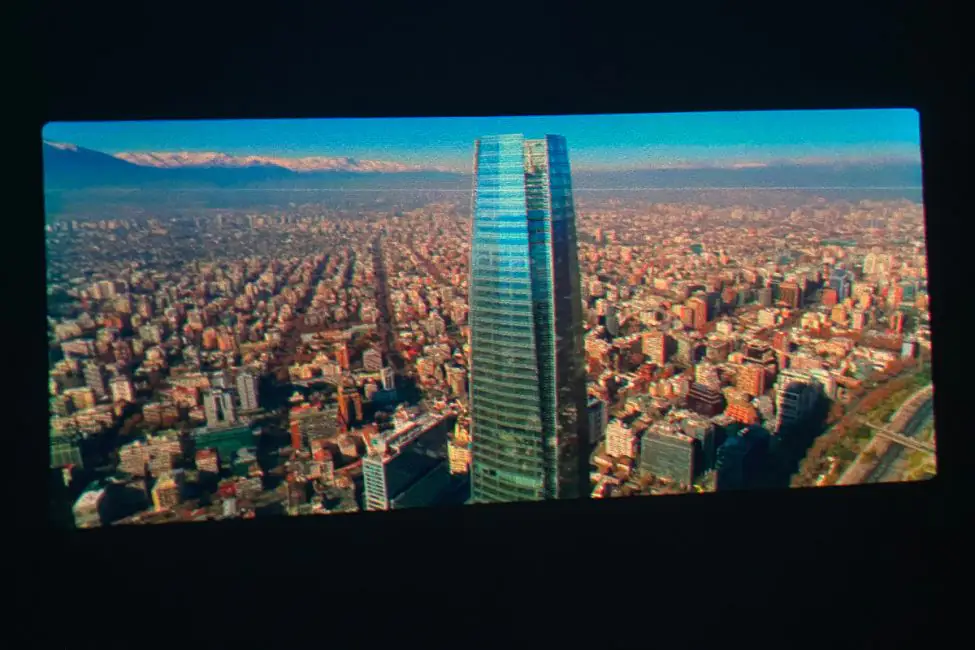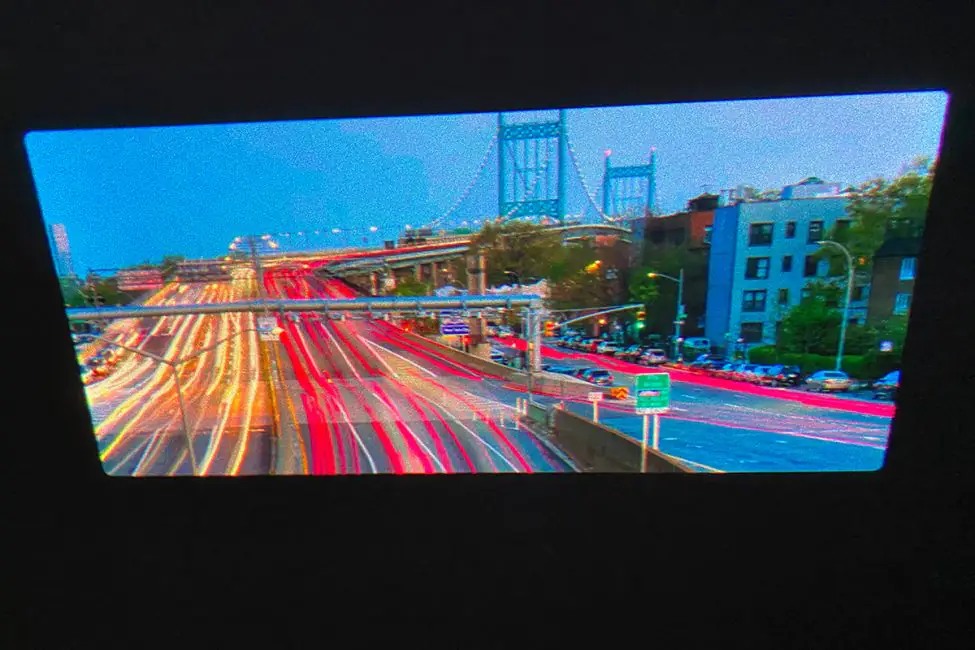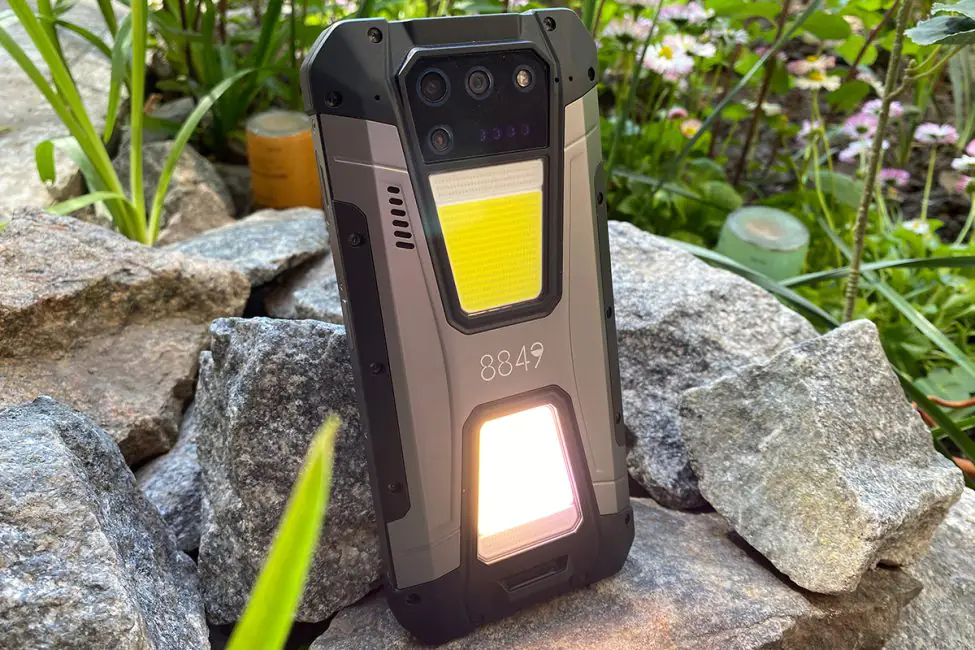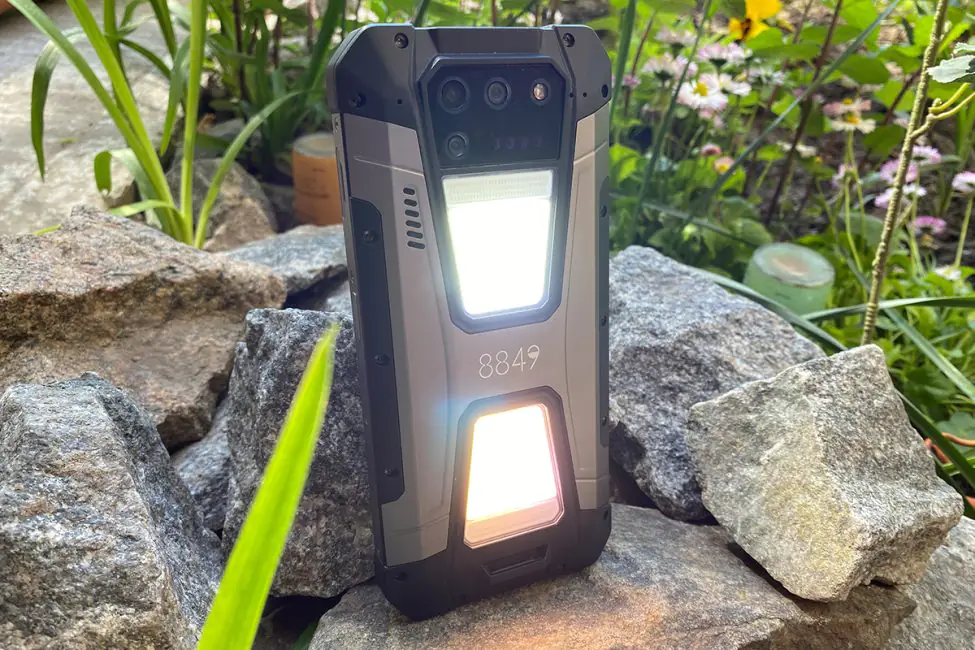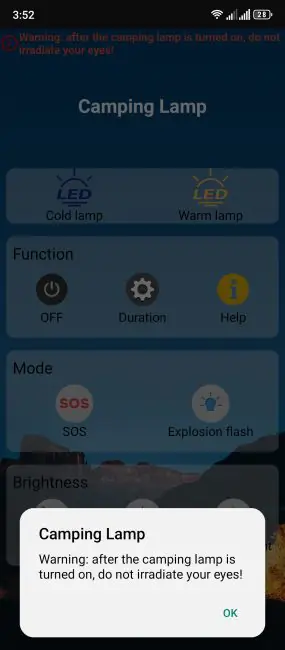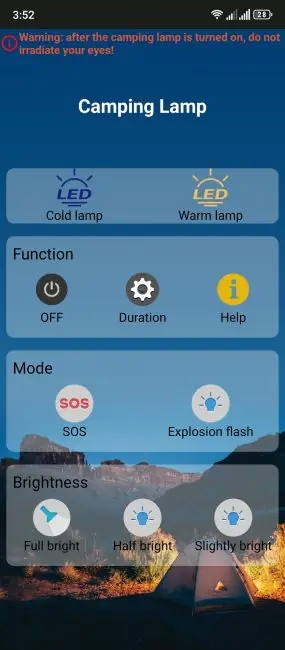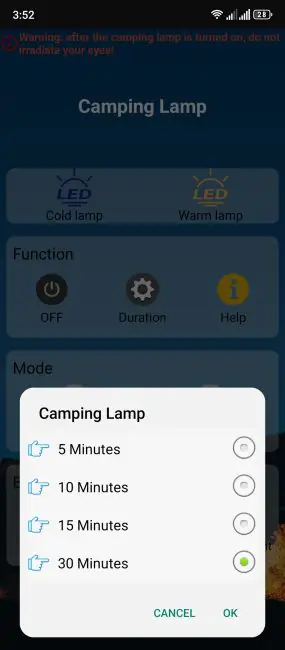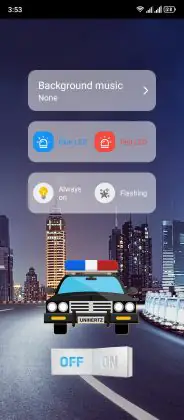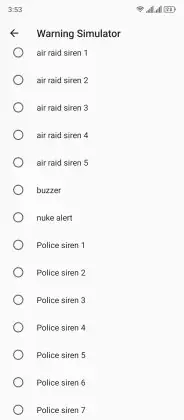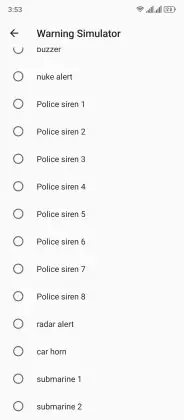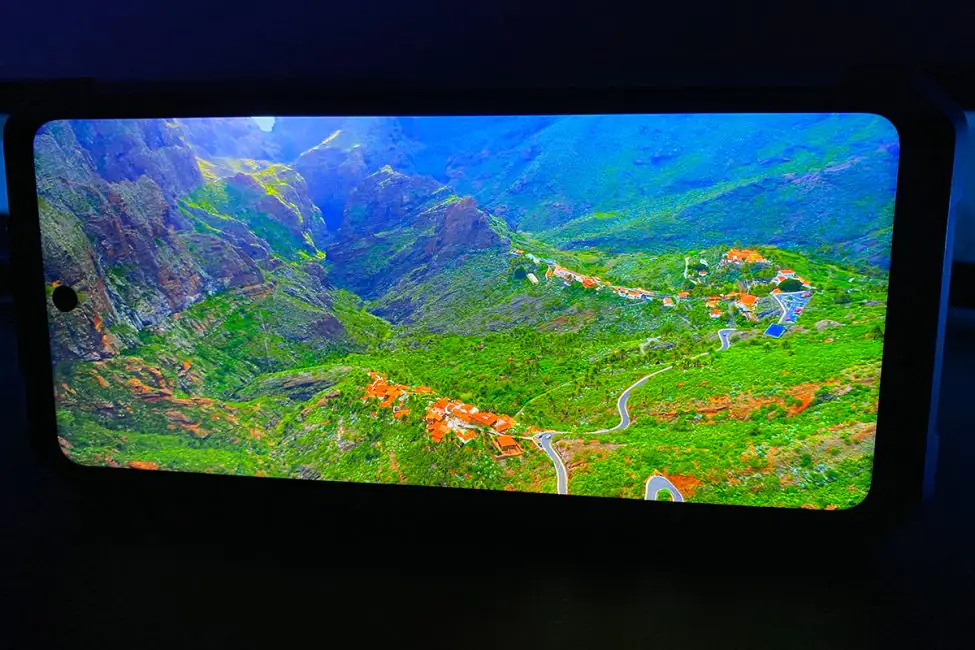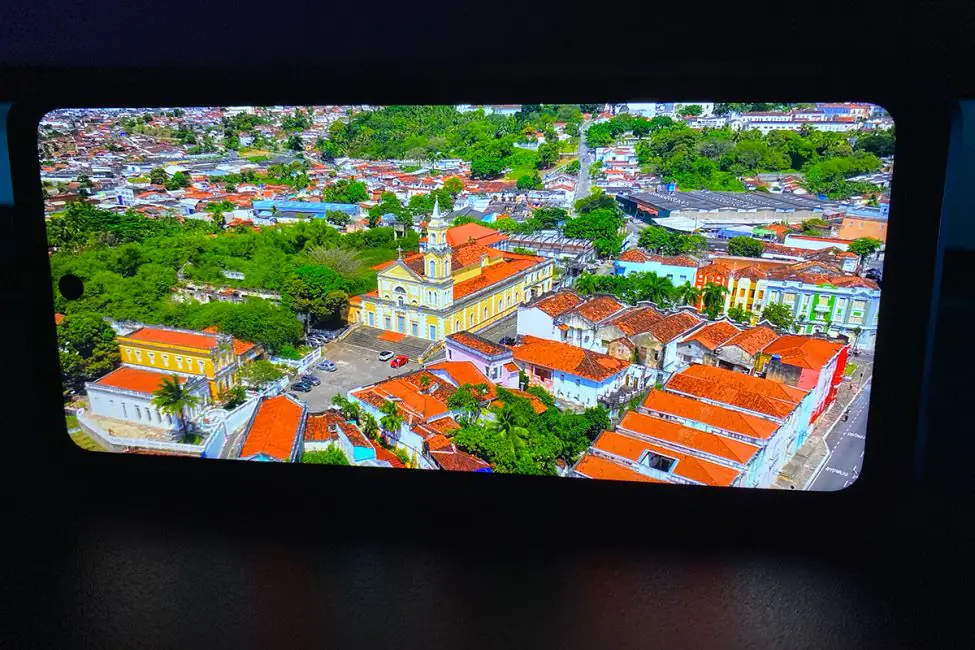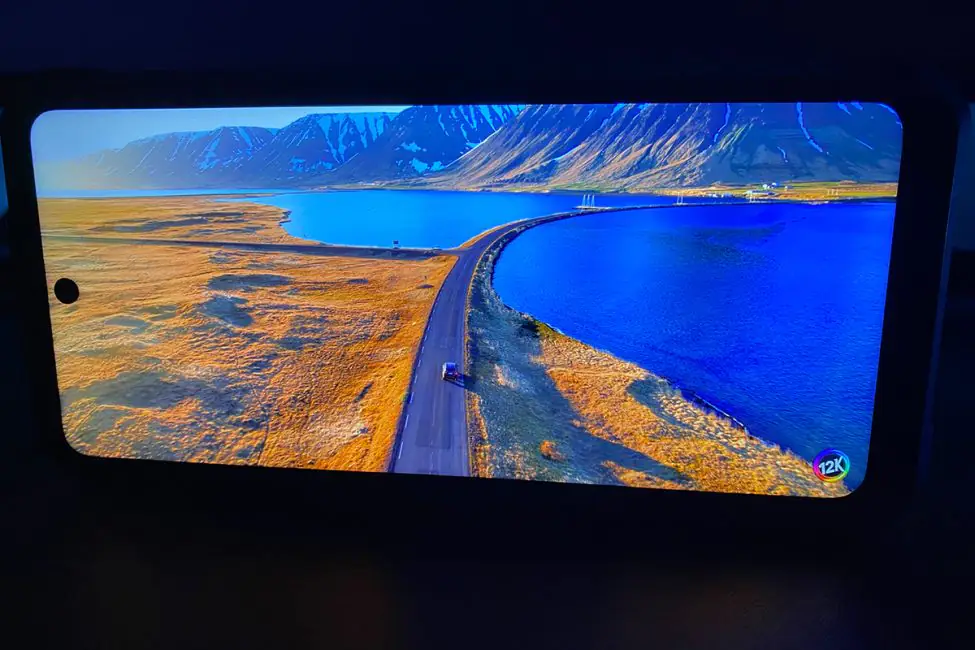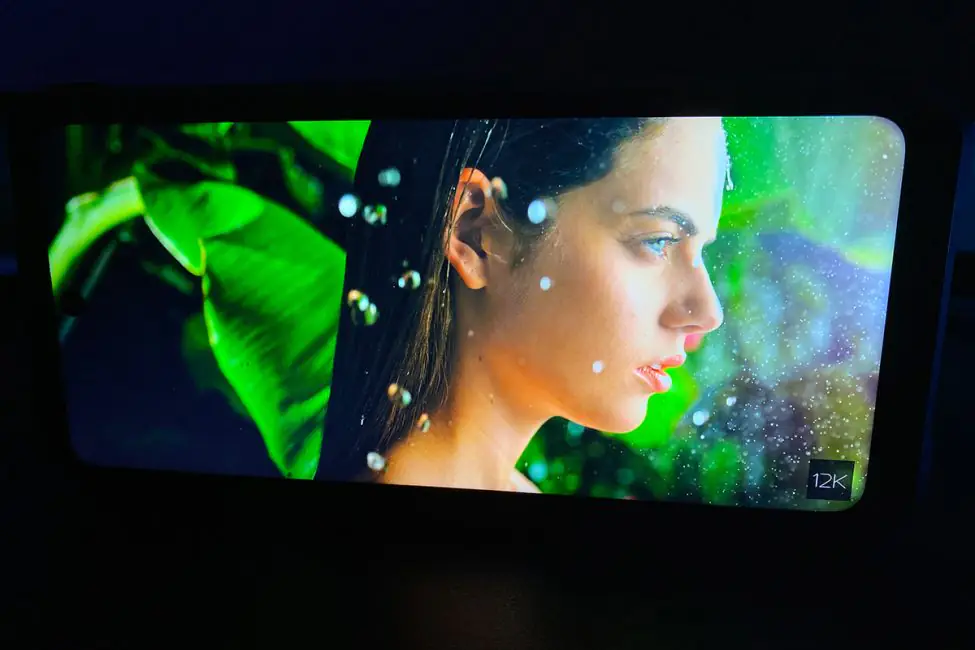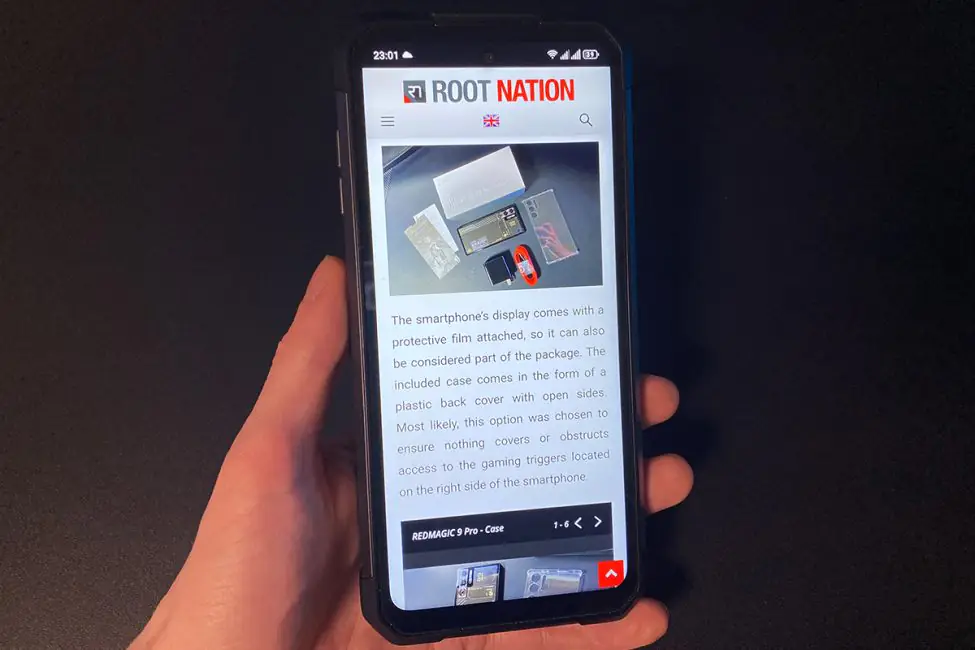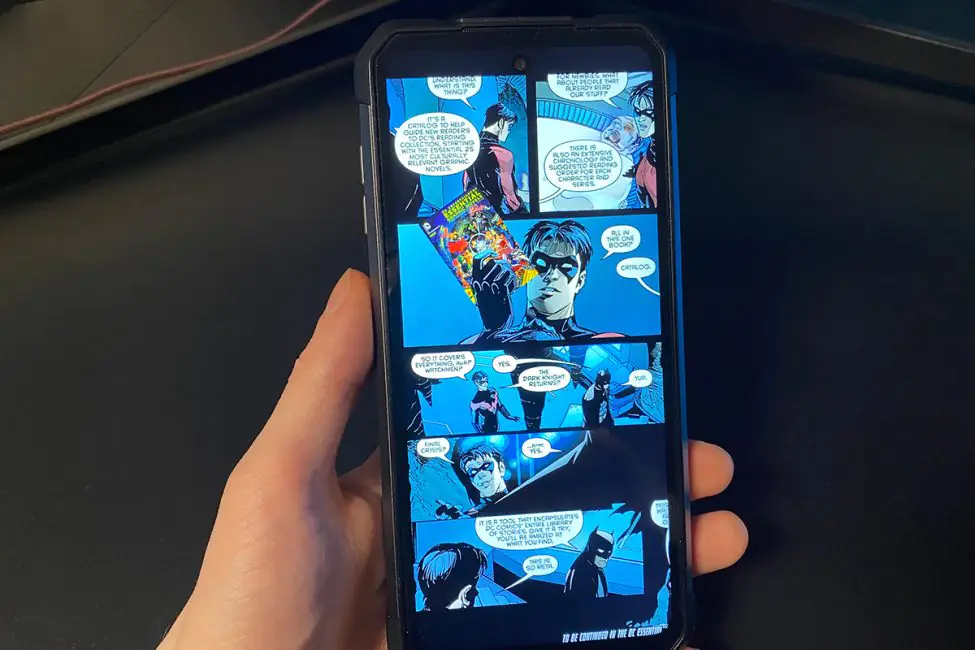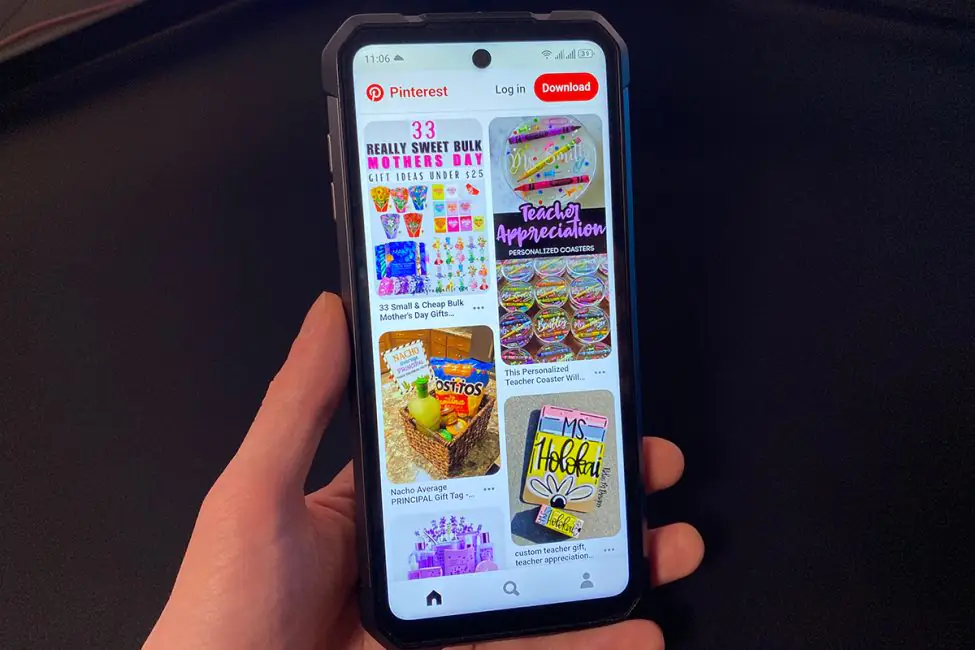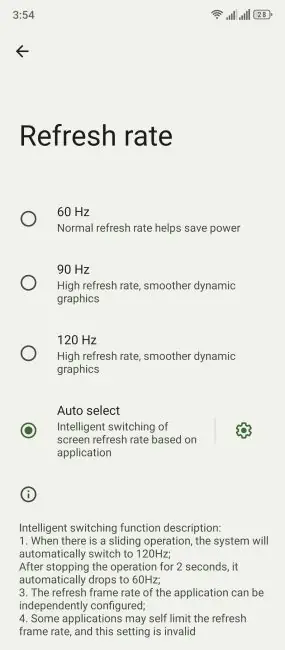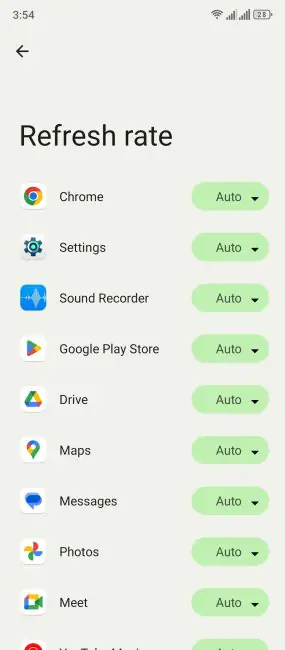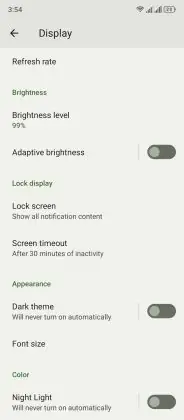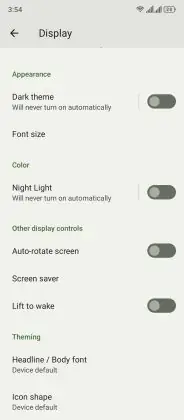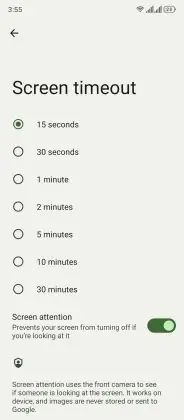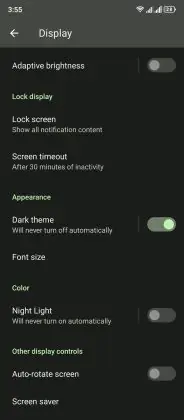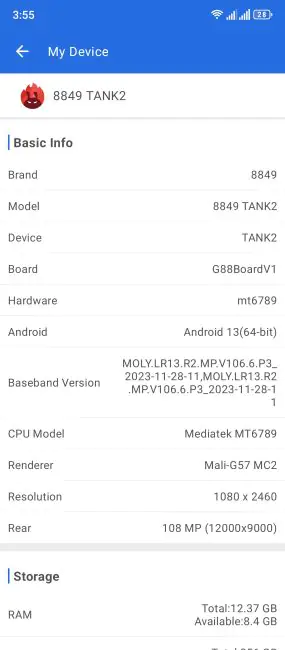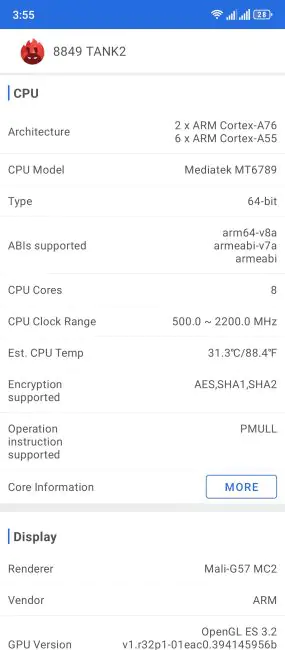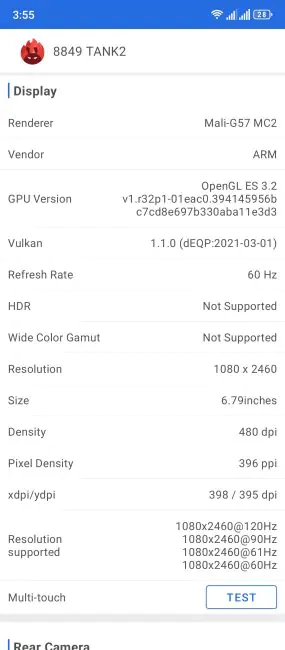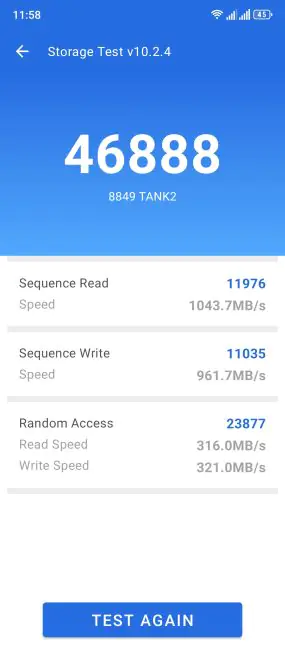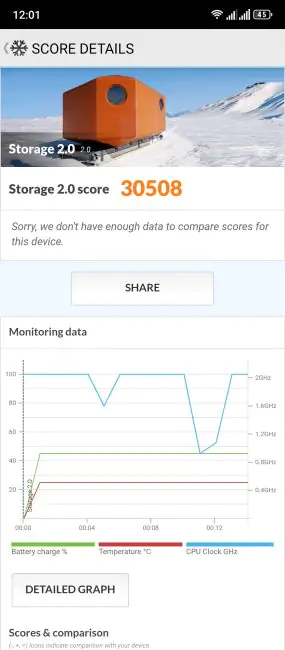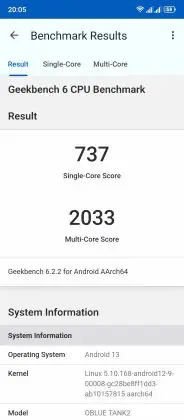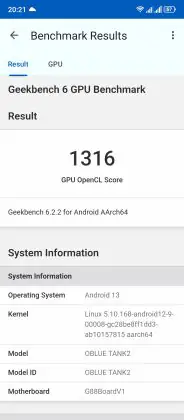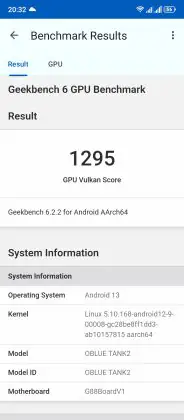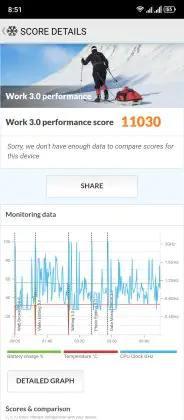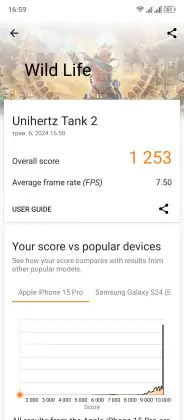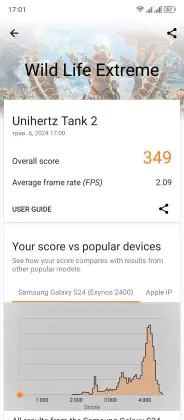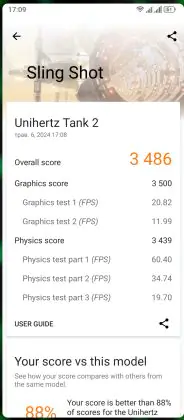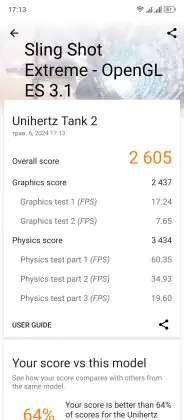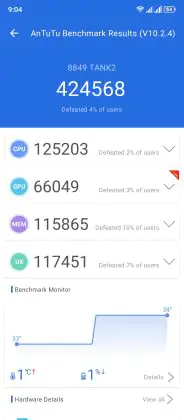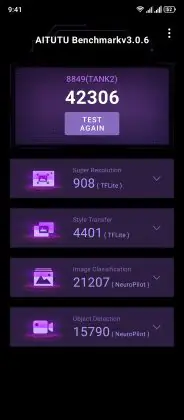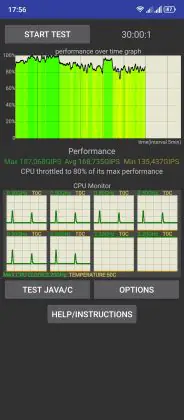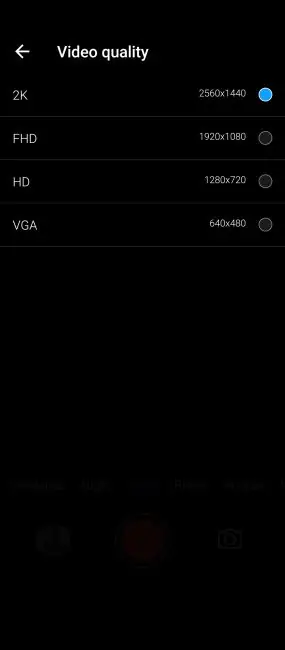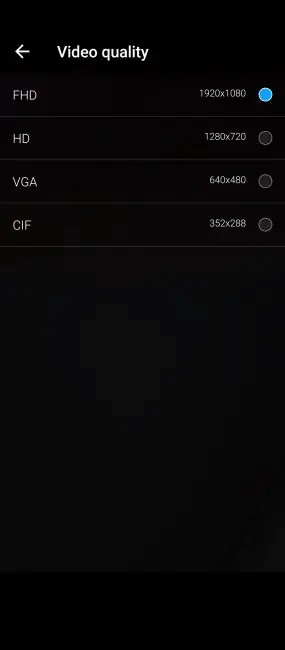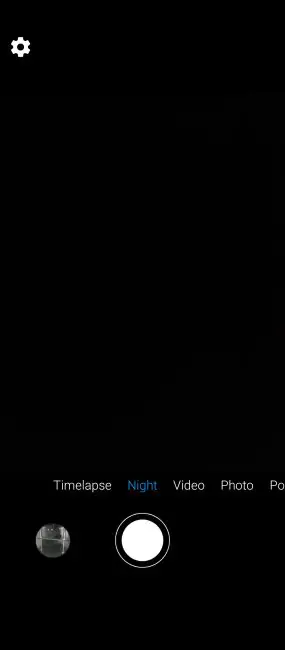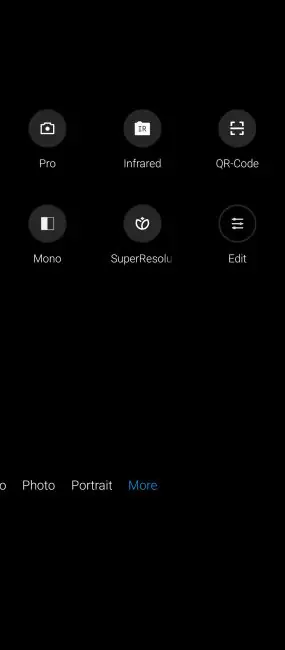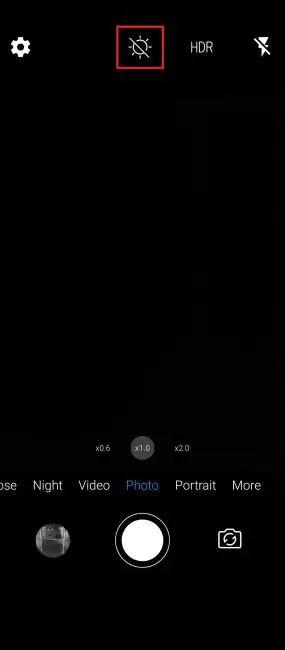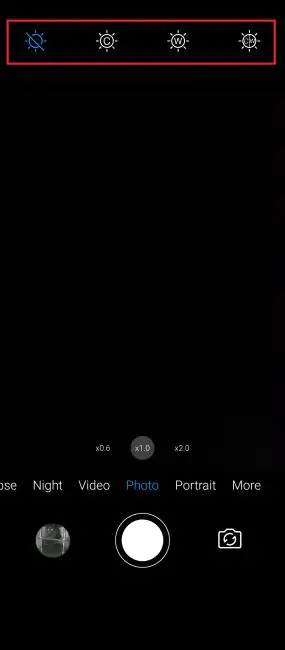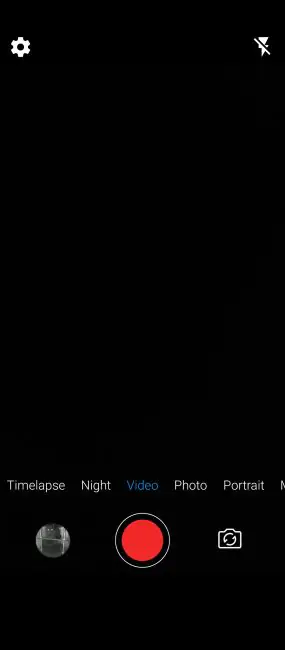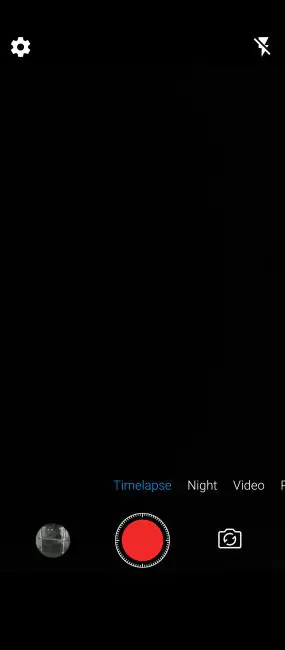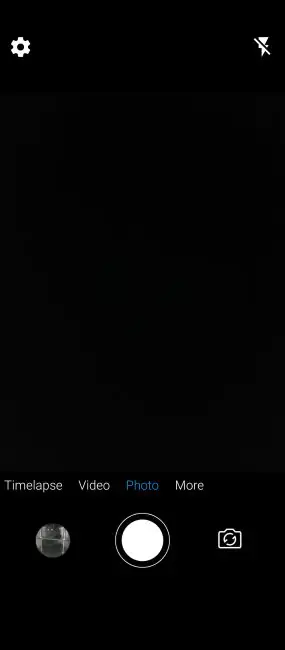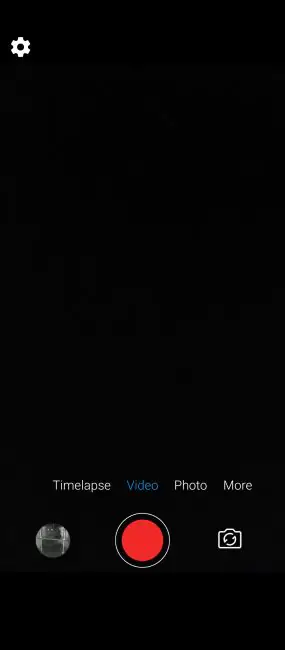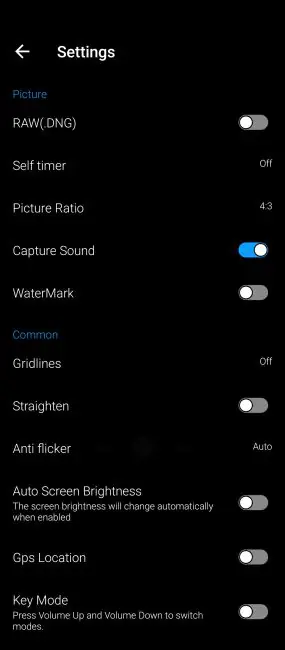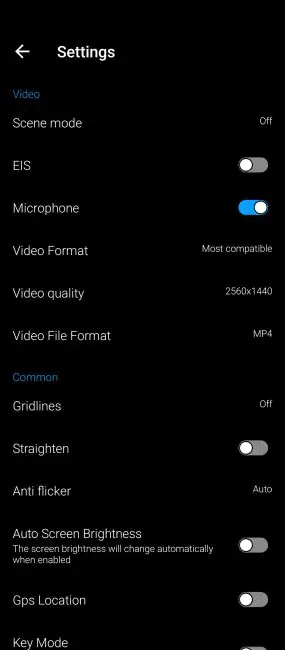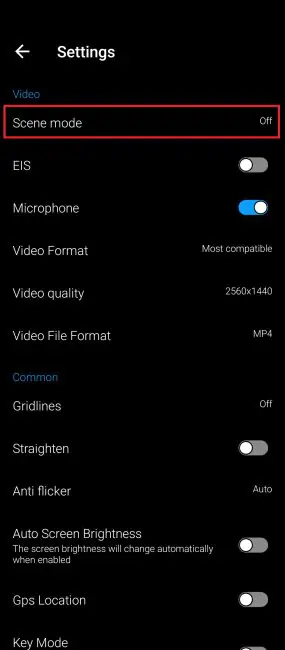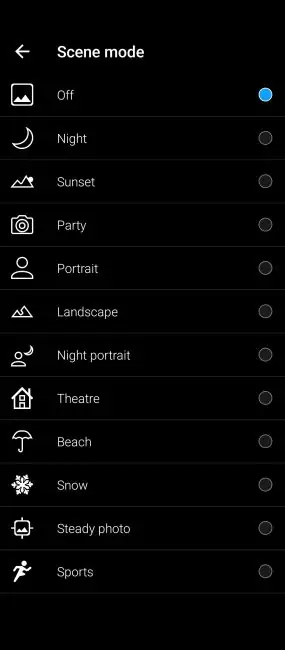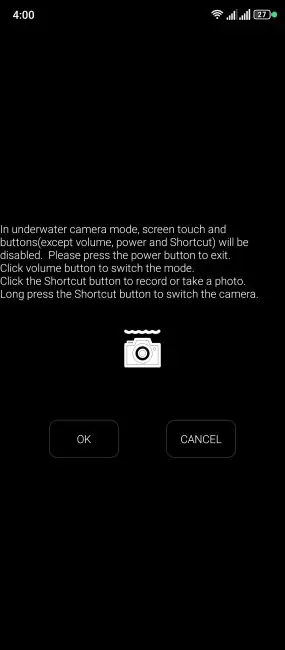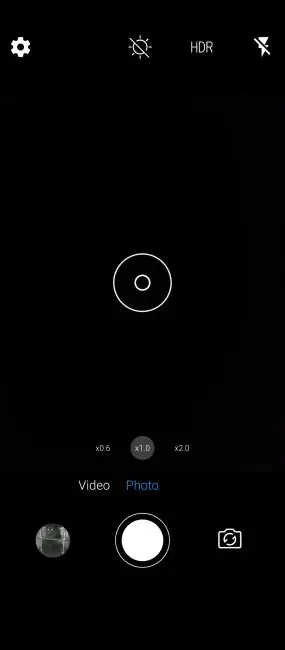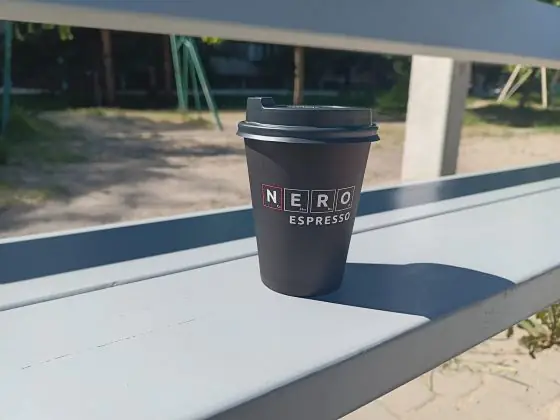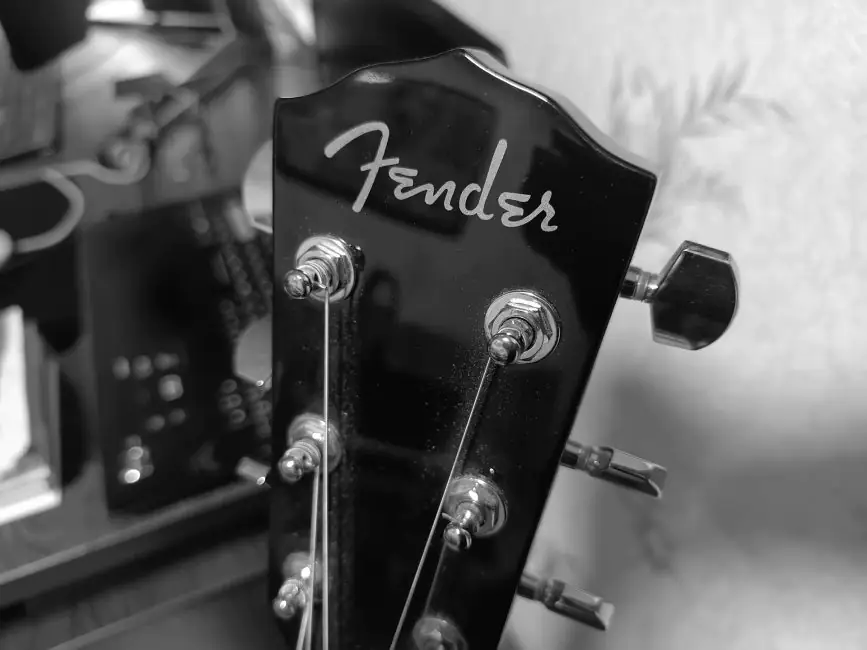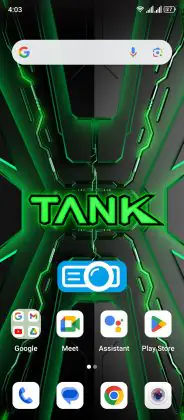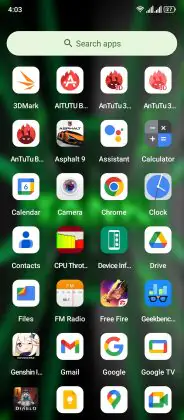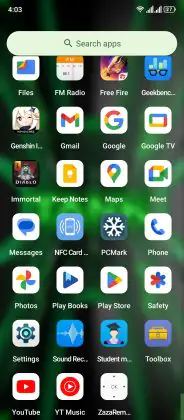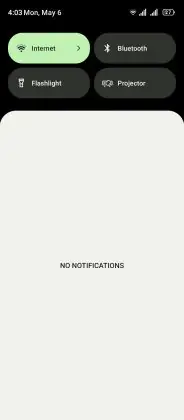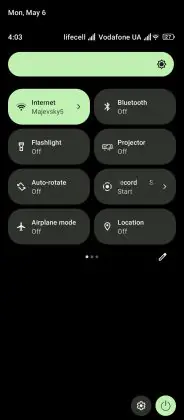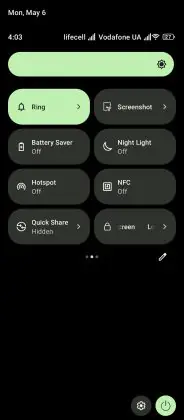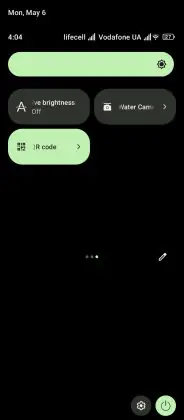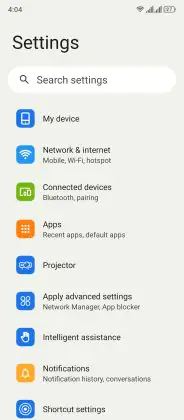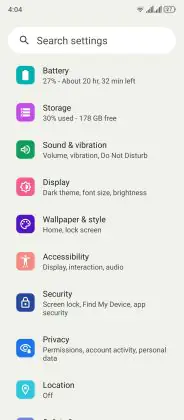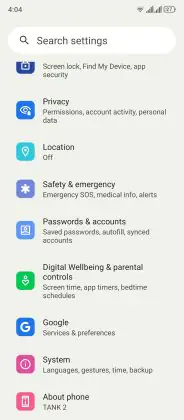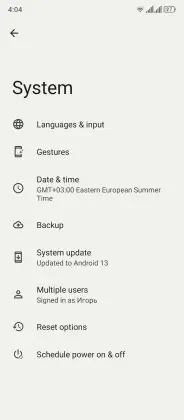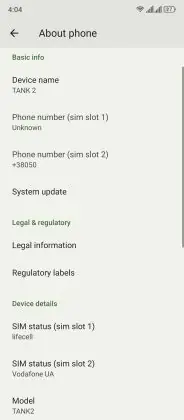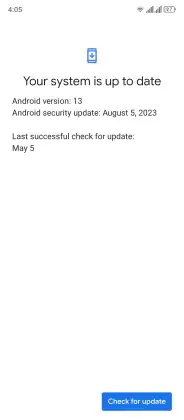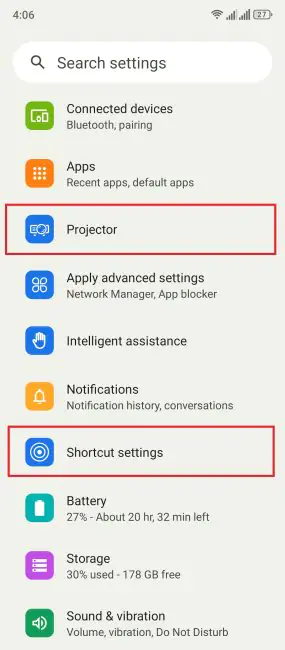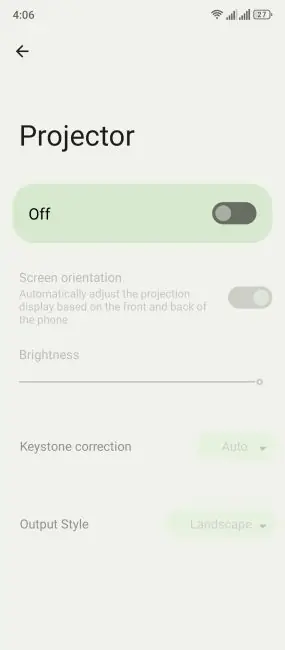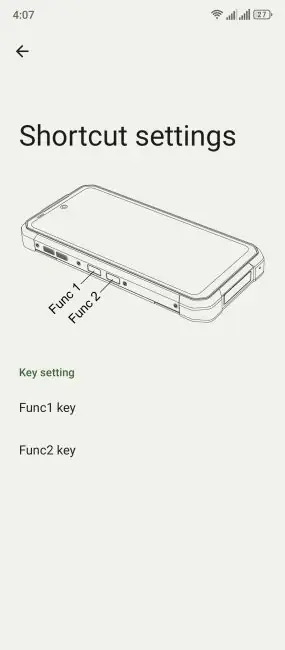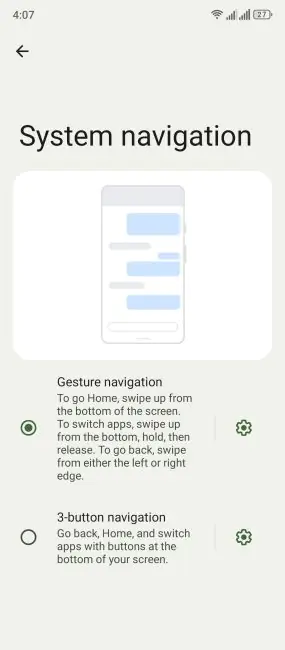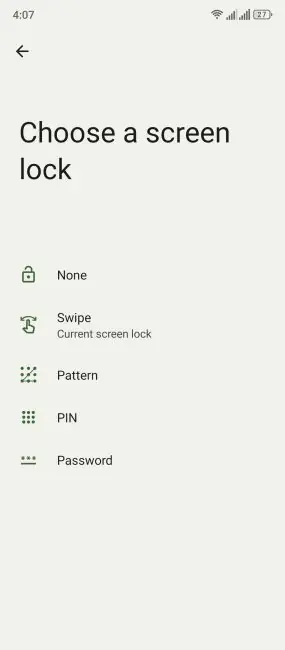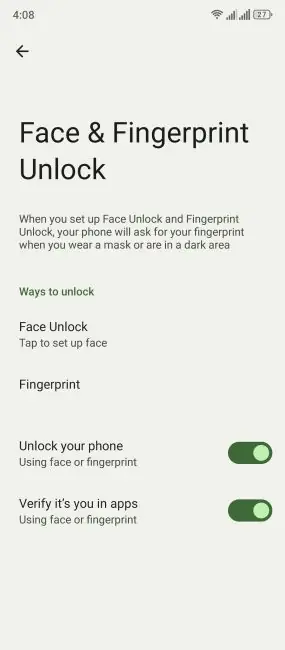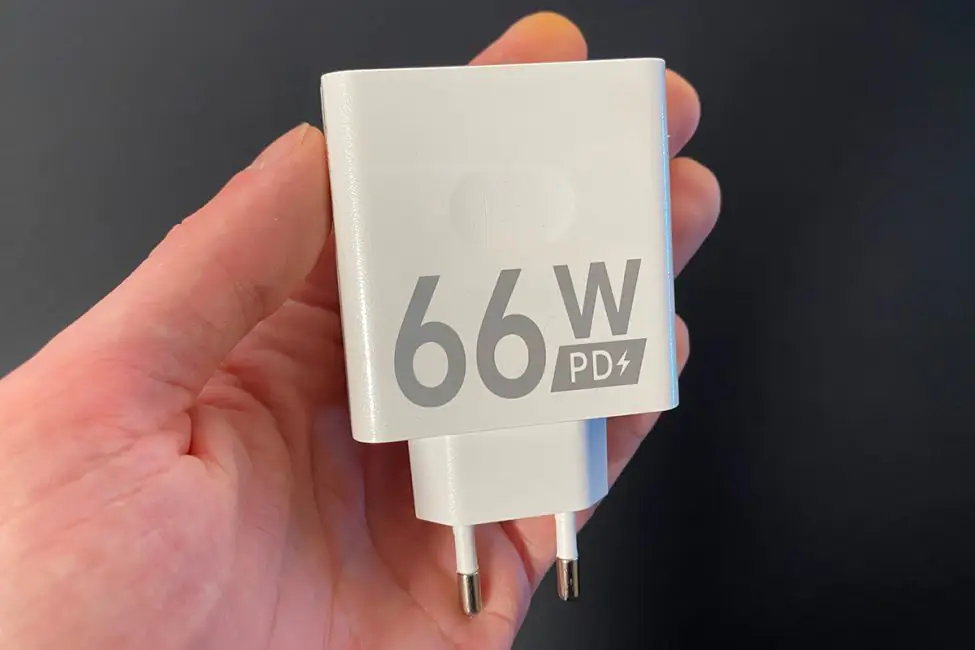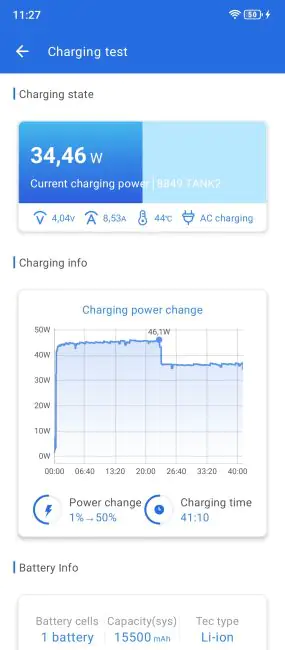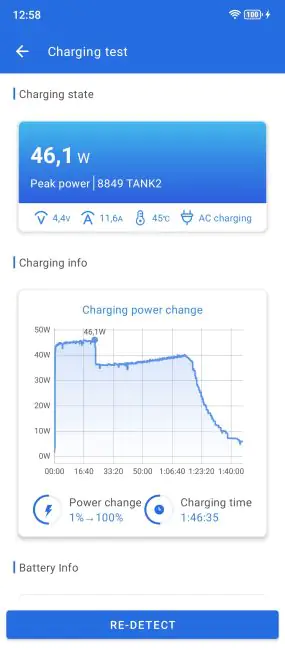© ROOT-NATION.com - Use of content is permitted with a backlink.
Today, I’m reviewing the 8849 TANK2. This is a rugged smartphone from the Chinese brand 8849, a division of Unihertz specializing in rugged devices. The TANK2 can be considered an improved version of the TANK. Many parameters of the new model have been enhanced, although the battery capacity has decreased. Key features include water, moisture, and dust resistance according to the IP68 standard, a robust shockproof body, a solid 15500 mAh battery, decent internals, and cameras capable of night photography. The main highlights that set this smartphone apart from other rugged devices are its full-fledged pico projector, 2 powerful flashlight, and 2 red and blue beacon lights. The device is unique and intriguing, deserving a comprehensive review, which we’ll start with a brief overview of its technical specifications and differences from the previous model.
Specifications
- Display: IPS; 6.79″; 1080×2460 resolution; 396 PPI; refresh rate up to 120 Hz
- Processor: MediaTek Helio G99 (MT6789); 8 cores (2×Cortex-A76 2.2 GHz + 6×Cortex-A55 2 GHz); 6 nm process; Mali-G57 MC2 graphics
- RAM: 12 GB LPDDR4X
- Storage: 256 GB UFS 2.2
- Memory card support: microSD up to 1 TB
- Rear camera: 3 lenses (main, night, wide-angle)
- Main lens: 108 megapixels; f/1.8; Samsung ISOCELL HM2 sensor
- Night lens: 64 megapixels; f/1.8; OmniVision OV64B sensor
- Wide-angle lens: 16 megapixels; f/1.8; OmniVision OV16B10 sensor
- Video recording: 2K@30FPS, 1080P@30FPS, 720P@30FPS, 480P@30FPS
- Front camera: island; 32 megapixels; f/2.0; Samsung ISOCELL GD1 sensor; video recording 1080P@30FPS, 720P@30FPS, 480P@30FPS, 288P@30FPS
- Audio: 1.5 W speaker; 3.5 mm mini-jack
- Projector: 40 lumens brightness; 1.2:1 ratio; 1280×720 resolution; 80000:1 contrast ratio
- Battery: 15500 mAh; 66W fast charging; 10W reverse charging
- Operating system: Android 13
- Communication standards: 2G, 3G, 4G
- Wireless technologies: Wi-Fi 5; Bluetooth 5.3; NFC
- Geolocation services: GPS, GLONASS, BeiDou, Galileo
- SIM card slot: triple (2 nanoSIM + 1 microSD)
- Sensors and gauges: proximity sensor, light sensor, accelerometer, gyroscope, electronic compass, barometer, fingerprint scanner (in the lock button)
- Protection: water, moisture, dust (protection class IP68); shockproof case
- Dimensions: 179.3 × 85.8 × 24.2 mm
- Weight: 530 g
- Package contents: smartphone, display screen protector, 66 W charger, USB-C to USB-C cable, SIM tray eject tool, documentation
Differences from the previous Unihertz TANK model:
- Battery capacity decreased from 22000 to 15500 mAh
- Display resolution increased from 2340×1080 to 2460×1080
- Display diagonal decreased from 6.81″ to 6.79″
- Refresh rate increased to 120 Hz
- Added a laser pico projector
- Added 2 illuminated strips on the rear panel (red and blue)
- Increased the number of flashlights (from 1 to 2)
- SIM card tray became triple (2 nanoSIM + 1 microSD)
- Android version updated to 13 (was Android 12)
- Night camera resolution increased from 20 to 64 MP
- Replaced the 2 MP macro lens with a 16 MP wide-angle lens
- Reduced weight (from 560 to 530 g)
- Device size slightly increased (from 175.6×85.3×23.9 to 179.3×85.9×23.5 mm)
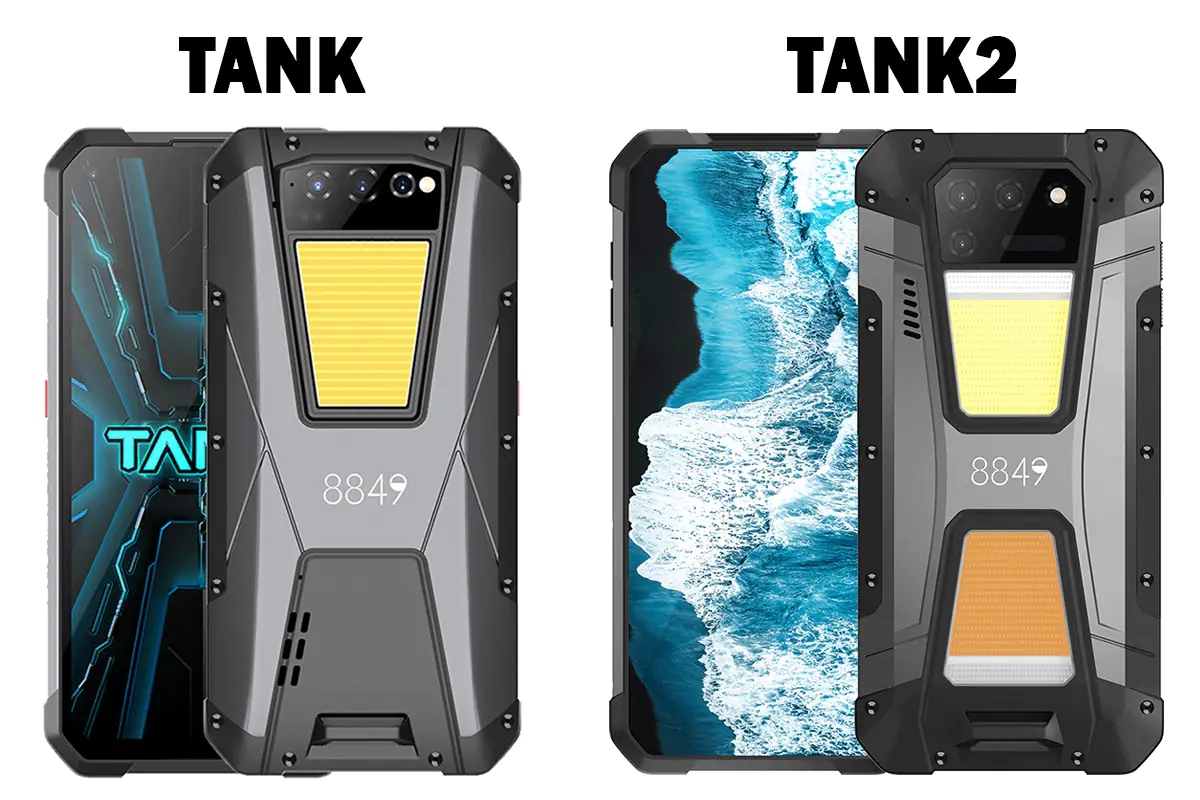
Positioning and price
First and foremost, the 8849 TANK2 is positioned as a reliable rugged smartphone for travelers, tourists, and adventurers. If we visit the official 8849 website, we’ll see that this audience is precisely the target market for this model. The presence of powerful flashlight, referred to by the manufacturer as “Camping Light,” also indicates its intended purpose. Additionally, the inclusion of beacons, which can be useful in emergency situations during travels, reinforces its suitability for outdoor use. To further distinguish itself in the niche of rugged devices, 8849 added a full-fledged pico projector to the smartphone, which is quite rare in smartphones in general.
When it comes to the price, you can purchase the 8849 TANK2 on the manufacturer’s official website or on AliExpress. On the official website, the smartphone is priced at $599 / €557. However, on AliExpress, you can buy the smartphone at a lower price. At the time of writing this review, the discounted price on AliExpress was $400 / €372.
Using the Alitools extension, you can track the price dynamics of this model on AliExpress. Over the last 3 months, the maximum price for the smartphone was $479 / €445, while the minimum was $300 / €279.
Package contents
The smartphone comes in a signature black box made of sturdy cardboard. The package includes:
- smartphone
- protective glass (with two cleaning cloths)
- 66 W charger
- USB-C to USB-C cable
- SIM tray eject tool
- documentation
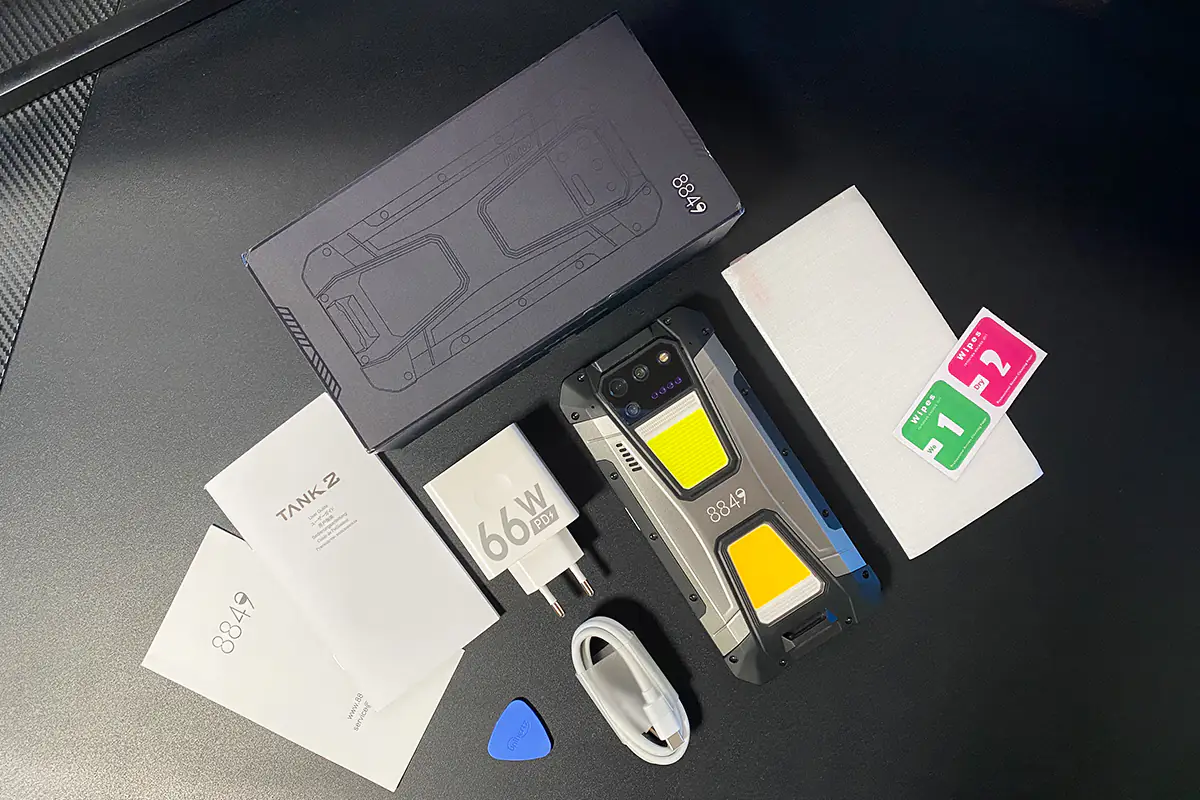
Overall, we have the standard basic package. However, it lacks earphones, which Chinese manufacturers often include with their devices (hello, Cubot). By the way, on the same AliExpress, you can additionally purchase the branded protective case for the smartphone for $20 and a stand for convenient use as a projector for $30.
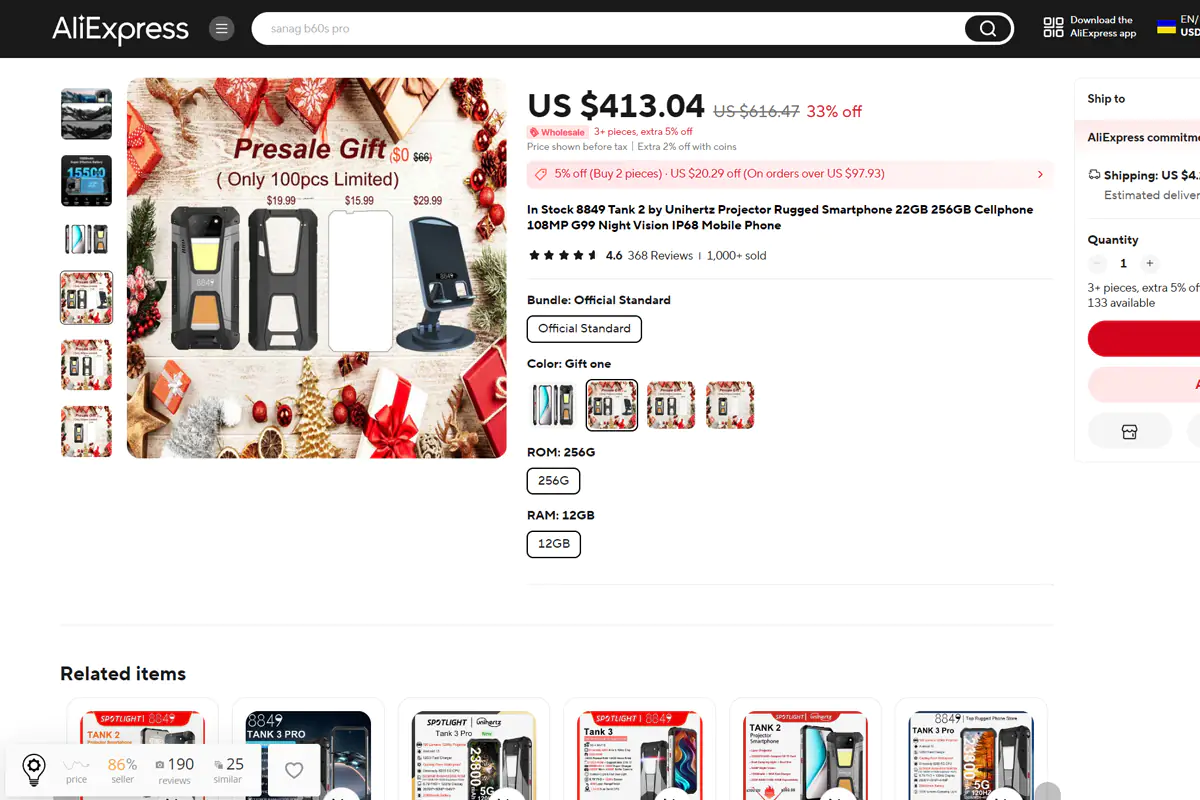
Design, ergonomics, build quality
The design of the TANK2 completely mirrors its predecessor. A large display, metal gray inserts, a shock-resistant rubberized body, and carabiner mounts. The only changes in the design are a slightly modified rear camera block and the presence of a second flashlight with red and blue LED strips. Externally, the smartphone has a massive, powerful, and quite rugged appearance. The device measures 179.3×85.8×24.2 mm and weighs 530 g.
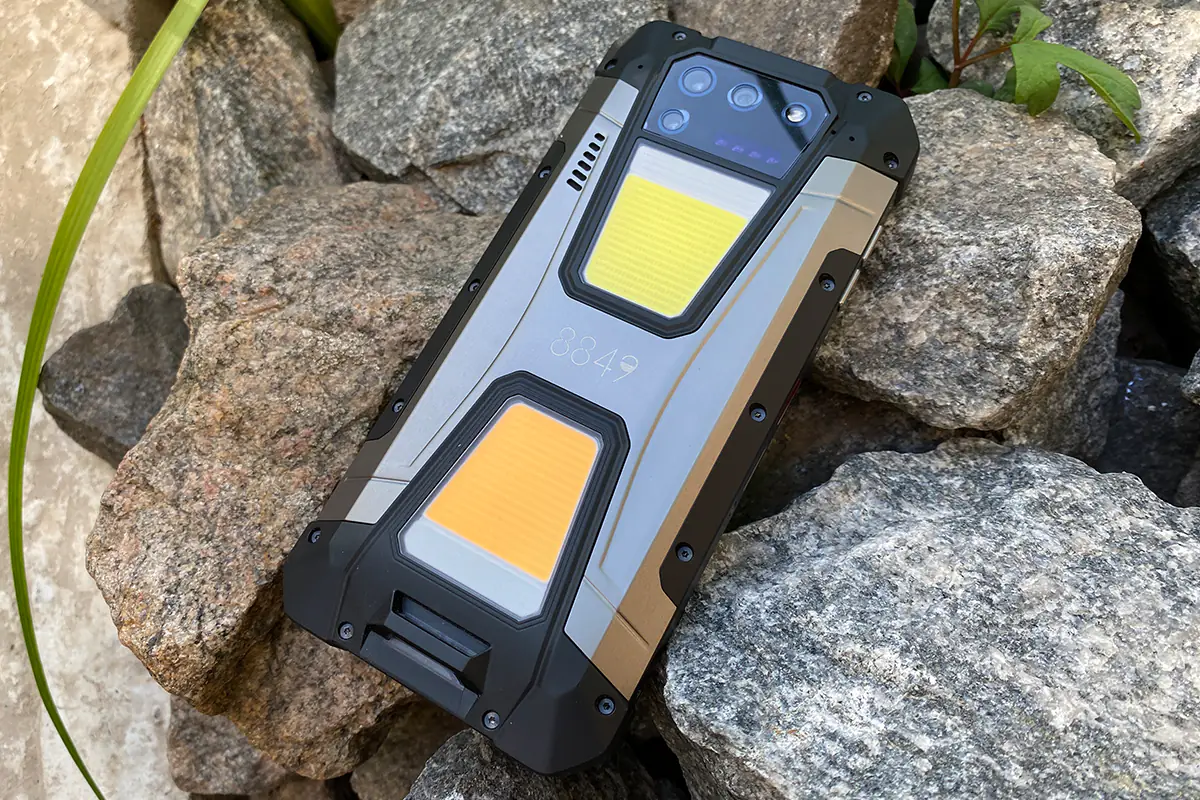 The front panel features a 6.79-inch IPS display. The bezels are quite large due to the housing: 8 mm on the sides, 10 mm at the top and bottom. Along the edges of the display, the housing is slightly raised, creating borders of approximately 1 mm. The front camera is of the hole-punch type, positioned at the top of the display. There is a factory-installed protective film on the display itself. There is no mention of protective glass for the TANK2 display in the official information, although its predecessor had Panda Glass.
The front panel features a 6.79-inch IPS display. The bezels are quite large due to the housing: 8 mm on the sides, 10 mm at the top and bottom. Along the edges of the display, the housing is slightly raised, creating borders of approximately 1 mm. The front camera is of the hole-punch type, positioned at the top of the display. There is a factory-installed protective film on the display itself. There is no mention of protective glass for the TANK2 display in the official information, although its predecessor had Panda Glass.
On the rear panel, we see a gray metal insert in the shape of the letter “H,” the brand logo “8849,” a speaker grille, a camera module, and 2 flashlights (cold and warm light) with red and blue LED strips. At the bottom of the housing, there is a carabiner attachment. The upper and lower parts of the rear panel are covered with a shock-resistant rubberized coating.
The left and right sides of the smartphone are made in the form of gray metal inserts – from the same material as on the rear panel. The corners are rounded, covered with black rubberized material.
On the left side of the smartphone, there are volume control buttons and two smart buttons. The smart buttons can be assigned to perform various functions, such as turning on the projector, opening applications, and so on.
The red button by default activates the upper flashlights (cool light) and switches its modes. Holding it down turns on the flashlight; a single short press adjusts the brightness/activates the strobe mode. Double-pressing activates the high-brightness mode. The high-brightness mode can be activated once within 10 minutes, most likely to prevent overheating, as the flashlights are quite powerful and can get warm.
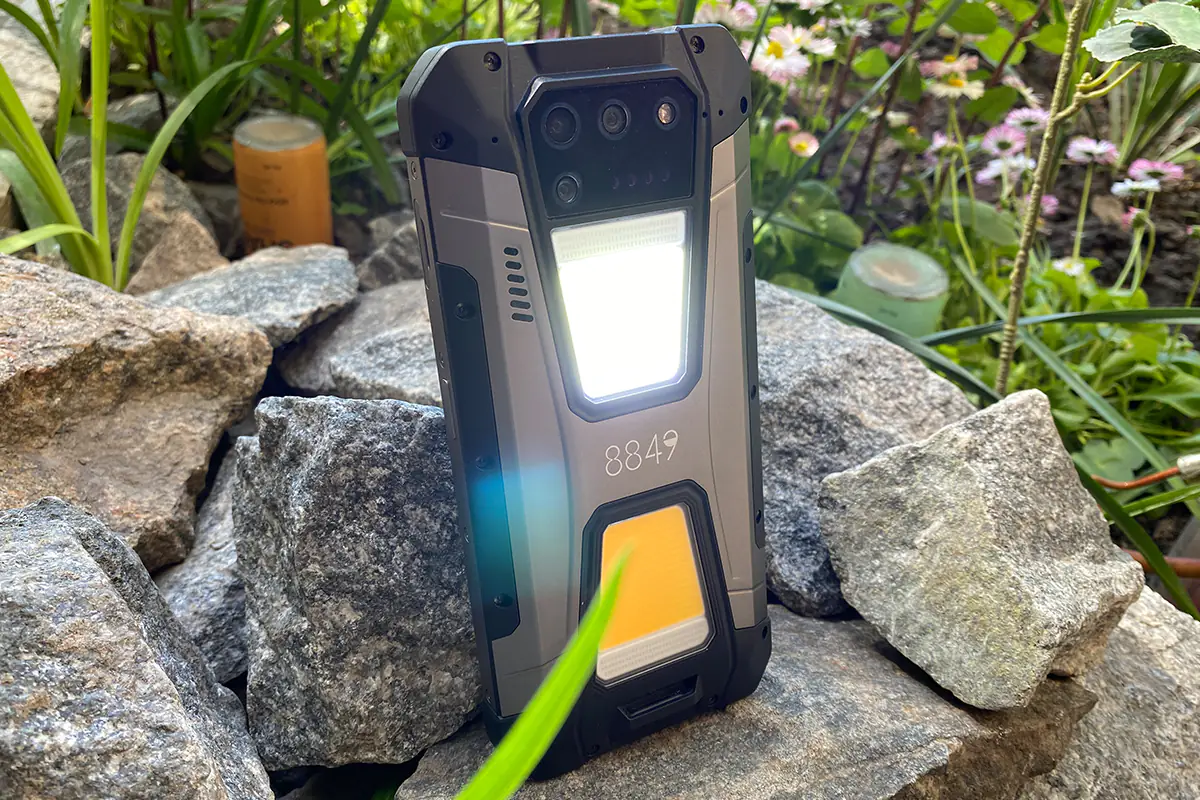 The smart button settings are adjusted in the respective menu. You can assign a separate function to holding, short, and double presses. And if desired, these buttons can be completely disabled.
The smart button settings are adjusted in the respective menu. You can assign a separate function to holding, short, and double presses. And if desired, these buttons can be completely disabled.
On the right side of the smartphone, there is a SIM tray and a power button. The power button integrates a fingerprint scanner. It seems a bit odd to place the power and volume control buttons on different sides of the smartphone, as there is more than enough space on the right side. It would have been convenient to place both the power and volume buttons here, within easy reach of the thumb.
The SIM tray in the smartphone is triple, allowing for the insertion of two nano-SIM cards and one microSD memory card. The package includes a special tool, similar to a SIM ejector, for removing the SIM tray, although the tray itself can be easily pulled out by simply using a fingernail.
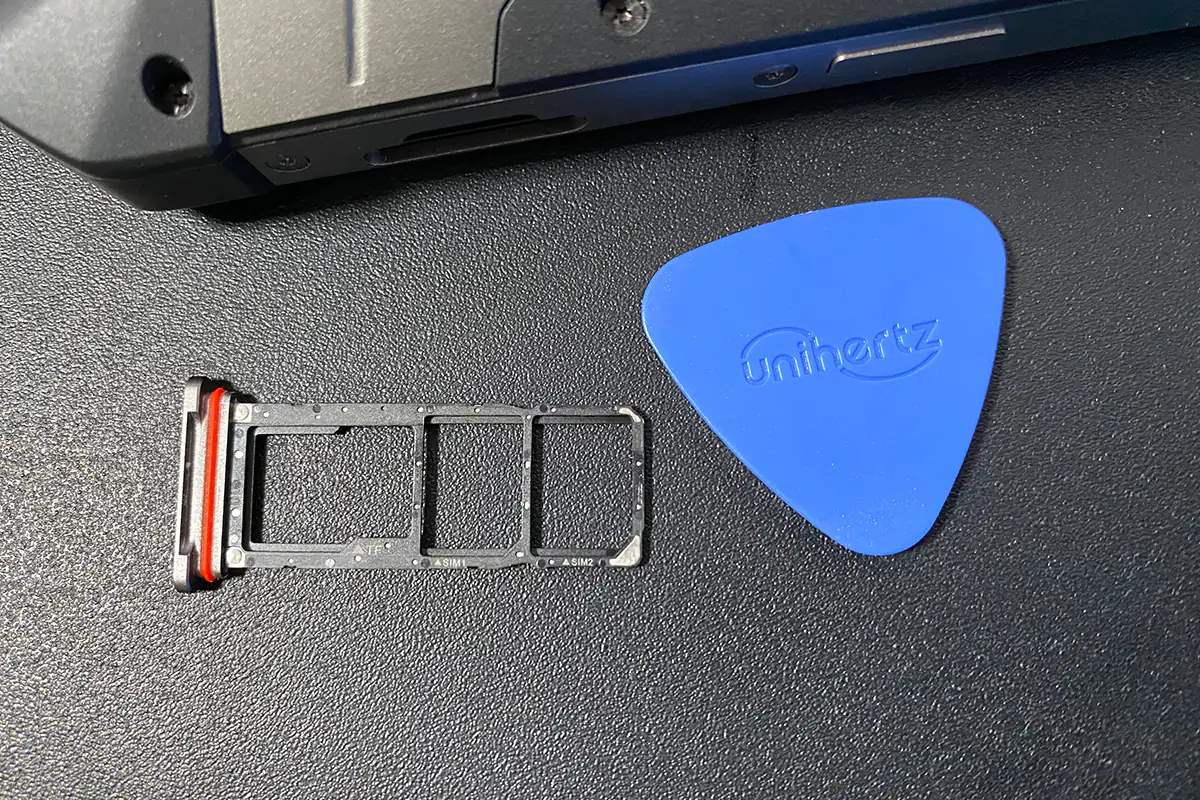 On the top of the smartphone, there is a window for the pico projector and an IR sensor. We’ll delve into the projector and its capabilities in detail later. On the bottom edge, under a rubber plug, the USB-C and mini-jack ports for a 3.5mm headset are hidden. One advantage is that the USB-C port is not recessed, as is sometimes the case with rugged smartphones. This means you can comfortably use any USB-C cable without needing an extended connector.
On the top of the smartphone, there is a window for the pico projector and an IR sensor. We’ll delve into the projector and its capabilities in detail later. On the bottom edge, under a rubber plug, the USB-C and mini-jack ports for a 3.5mm headset are hidden. One advantage is that the USB-C port is not recessed, as is sometimes the case with rugged smartphones. This means you can comfortably use any USB-C cable without needing an extended connector.
The build quality of the smartphone is excellent. The body feels sturdy, massive, and solid. The alignment of the elements is spot on — no gaps or irregularities. There’s nothing to complain about in terms of assembly; everything is top-notch.
In addition to the shockproof body, the smartphone has water, moisture, and dust protection — IP68 protection class. I’ll remind you that devices with an IP68 protection class can be used at depths of up to 1.5 meters for up to 30 minutes without worrying about their integrity.
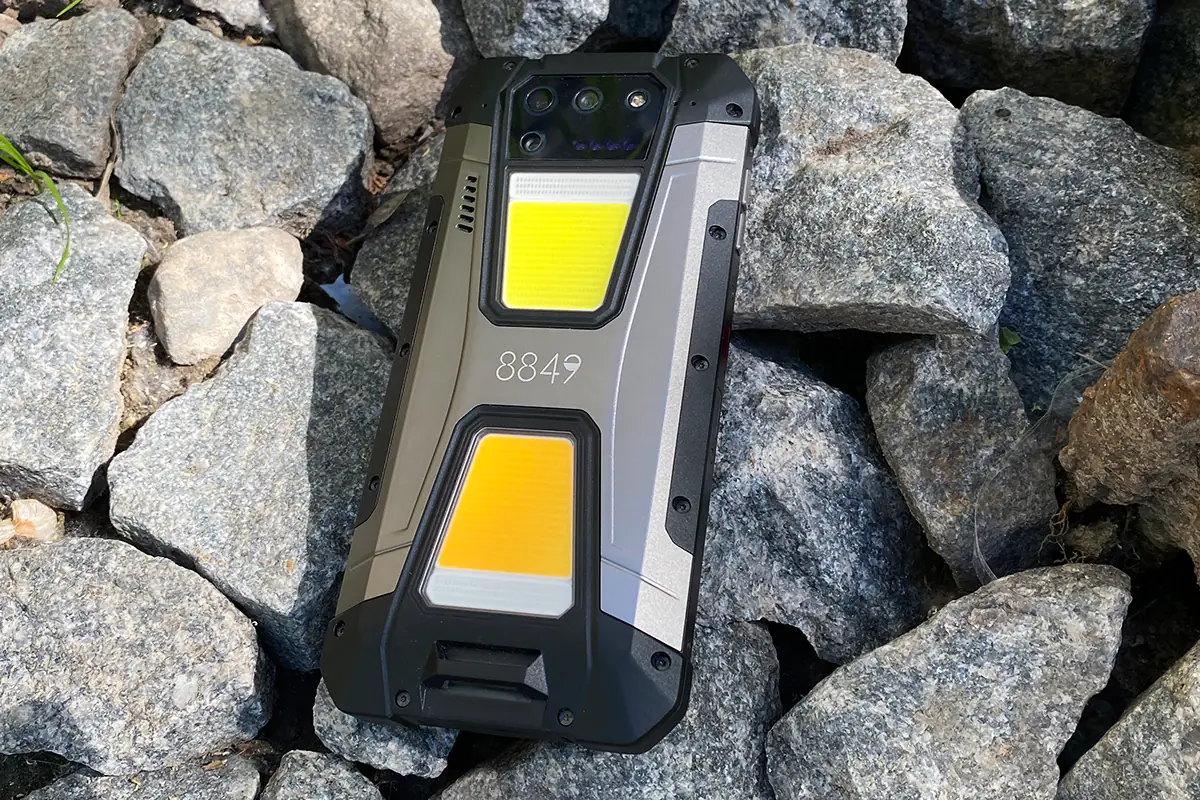
However, when it comes to ergonomics, not everything is smooth with the smartphone. It depends on how you look at it. If you consider the TANK2 as a regular smartphone, using it may not be entirely convenient. This is mainly due to its large size and weight. For example, holding the smartphone with one hand for a long time can cause fatigue due to the device’s weight. It may also not fit easily into pockets or bags due to its dimensions. However, if you view the TANK2 as a rugged multifunctional device for hiking or specific activities, then its ergonomics are fine. You can put it in a backpack without worrying about damaging it or hang it on a carabiner.
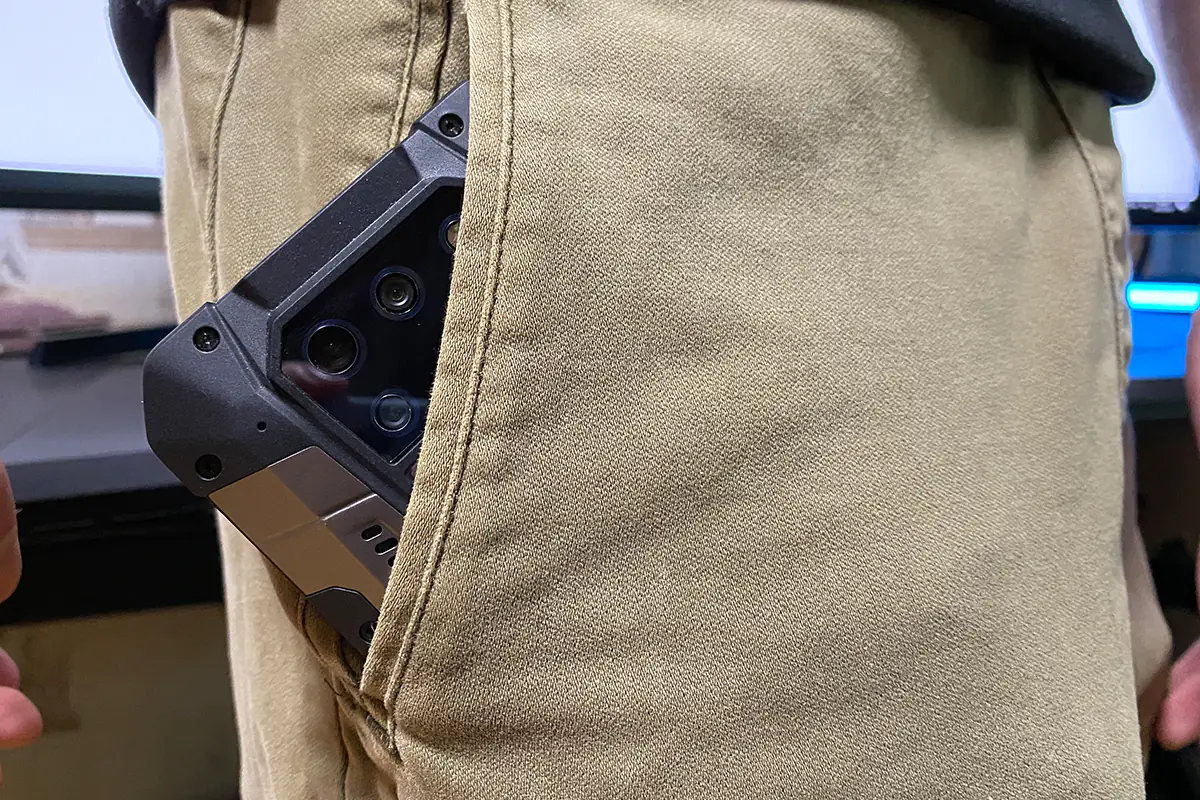 The only aspect of ergonomics that may seem unsuccessful from any perspective is the placement of the volume controls. I think it would have been more convenient to place them on the right side of the smartphone, next to the power button. There is enough space there. This way, you could unlock the smartphone and adjust the volume with one large finger.
The only aspect of ergonomics that may seem unsuccessful from any perspective is the placement of the volume controls. I think it would have been more convenient to place them on the right side of the smartphone, next to the power button. There is enough space there. This way, you could unlock the smartphone and adjust the volume with one large finger.
Read also:
- Cubot KingKong AX Rugged Smartphone Review: Sturdy Yet Elegant
- DOOGEE V30 Pro review: rugged smartphone with 200 megapixel camera
Projector, spotlights, beacons
As mentioned earlier, one of the outstanding features of the TANK2 is the presence of a pico projector, 2 powerful flashlights, and 2 small strips (beacons) of red and blue light. By the way, its predecessor (Unihertz TANK) had only 1 flashlight. As you can see, the new model has been significantly upgraded in this regard. In this section, let’s take a closer look at these features, starting with the most interesting one — the projector.
From the official information, you can find out the following characteristics of the projector:
- brightness – 40 lumens
- aspect ratio – 1.2:1
- resolution – 1280×720
- contrast ratio – 80000:1
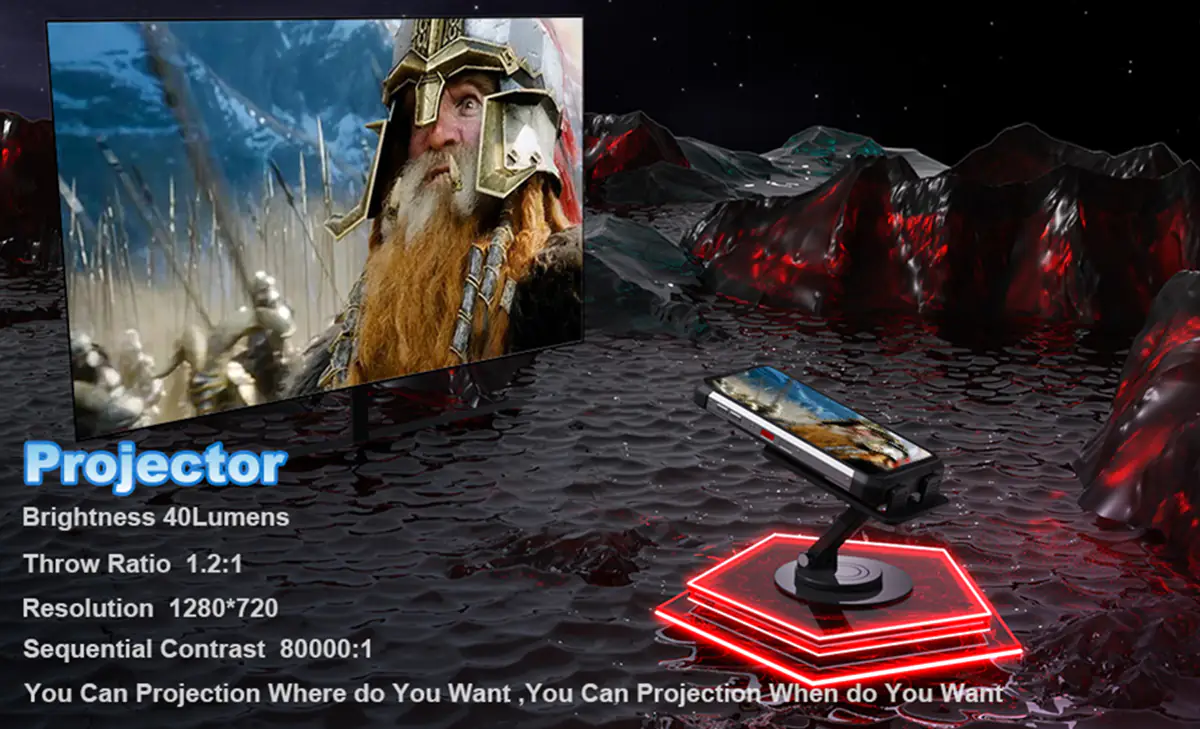 The projector can be activated from the dedicated menu on the smartphone, from the quick access panel, or from the widget on the home screen. Immediately after activation, the projector will automatically focus.
The projector can be activated from the dedicated menu on the smartphone, from the quick access panel, or from the widget on the home screen. Immediately after activation, the projector will automatically focus.
There aren’t many settings for the projector. Everything available is shown in the photo below.
The image quality of the projection is quite good. There’s good contrast and saturated colors. The image sharpness is average, depending on the distance and diagonal size. Also, the background onto which the projection is made plays a significant role. Ideally, the background should be bright and uniform. On such a surface, colors appear more saturated, and the contrast is higher. Below are examples of projections at different distances: photos 1 and 2 were taken at a distance of 2 meters, while photos 3 and 4 were taken at 1.5 meters. In all cases, the projection was made on a plain white wall.
As for the battery life when the projector is on, it typically discharges by about 30-35% over 3 hours of operation. So, with a full charge, the battery should last approximately 8-10 hours of continuous projection.
The smartphone is equipped with two powerful flashlights located on the rear panel. The upper projector emits cold light, while the lower one emits warm light. These projectors are very bright and have a wide coverage angle. Within a distance of up to 10 meters, they provide ample illumination. The projectors can operate simultaneously, separately, or flash in strobe mode.
Controlling the flashlights is easiest through a dedicated application located in the tools section. Here, you can adjust brightness, duration, lighting type, and more.
In addition to the flashlights, TANK2 is equipped with 2 strips that light up in red and blue. They’re similar to flashing beacons seen on vehicles and are also very bright. Like the flashlights, they can be turned on separately or together.
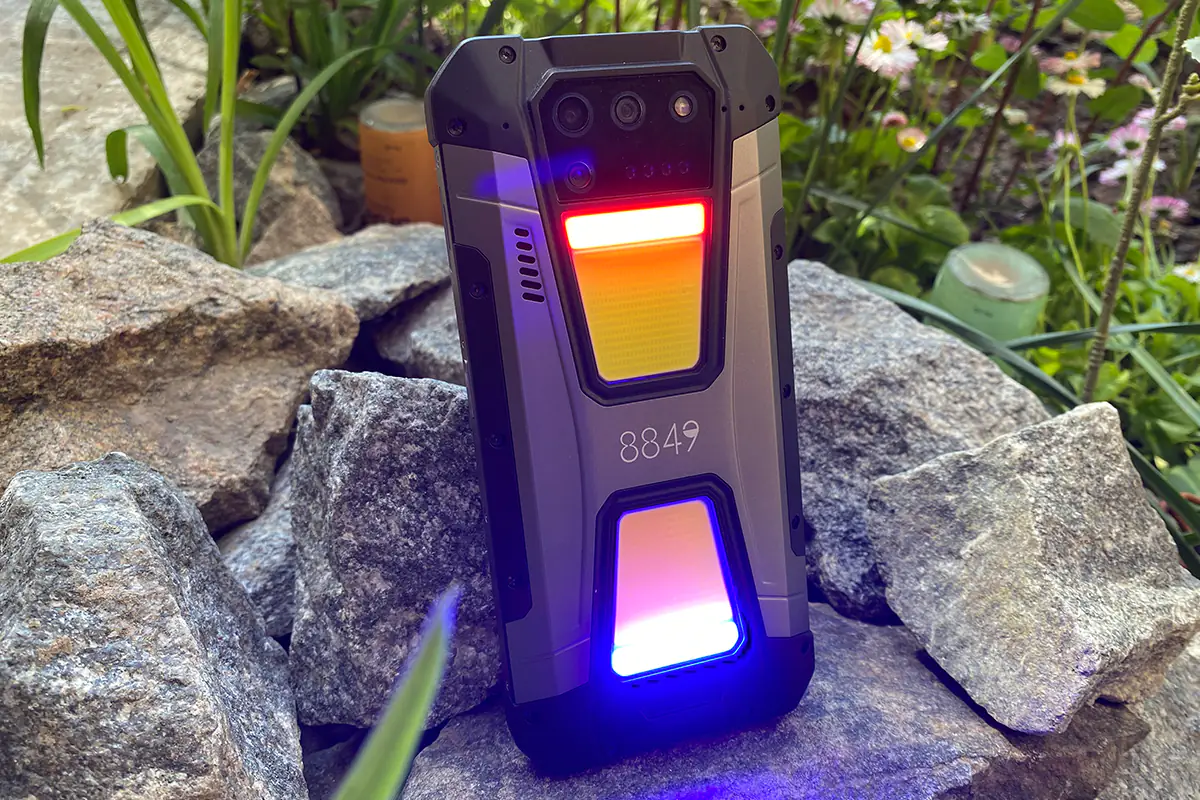 There’s a continuous lighting mode and a strobe function. Additionally, along with the beacons, you can activate audible alerts: sirens, alarms, signals, etc. The sound alerts are very loud. Overall, the feature is cool and can indeed be useful in an emergency situation. For example, when you need to send a noticeable SOS signal. You can also control the beacons in a special application.
There’s a continuous lighting mode and a strobe function. Additionally, along with the beacons, you can activate audible alerts: sirens, alarms, signals, etc. The sound alerts are very loud. Overall, the feature is cool and can indeed be useful in an emergency situation. For example, when you need to send a noticeable SOS signal. You can also control the beacons in a special application.
Display
The smartphone features a 6.79-inch IPS display with a resolution of 1080×2460 pixels and a refresh rate of up to 120 Hz. The pixel density is 396 PPI. There’s no HDR support. Essentially, it has a simple IPS panel with a decent resolution, PPI, and a high refresh rate.
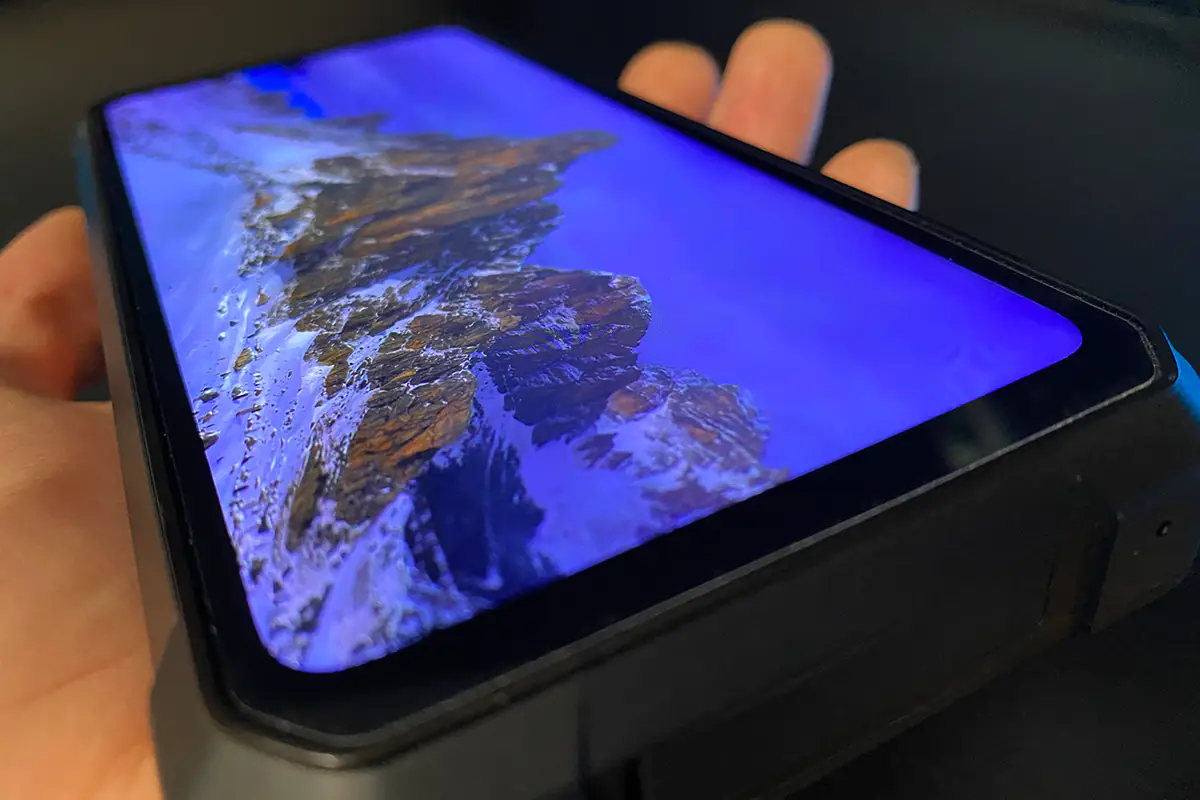 Color reproduction is generally good, but in some areas, saturation may be lacking. Black color and shades look good. There are no complaints about contrast either.
Color reproduction is generally good, but in some areas, saturation may be lacking. Black color and shades look good. There are no complaints about contrast either.
The viewing angles are wide, and the display remains easily readable from any angle. There are no color, brightness, or contrast distortions.
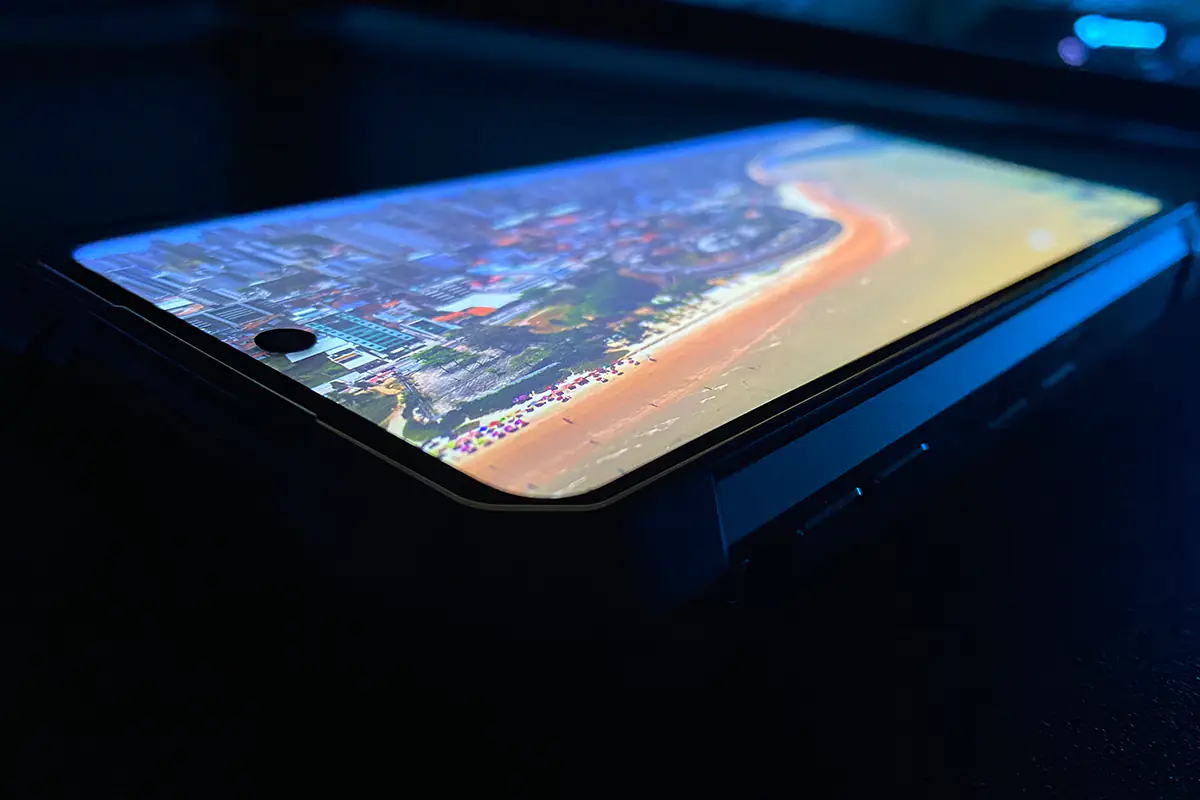 The image clarity is good, with text, video, and graphics appearing sharp on the display without blurring.
The image clarity is good, with text, video, and graphics appearing sharp on the display without blurring.
The brightness of the display is slightly low. The optimal brightness level is achieved at around 95%. This is not critical for indoor or low-light conditions. However, visibility may be an issue on sunny days outdoors. Below is a photo showing the maximum brightness level in bright sunlight.
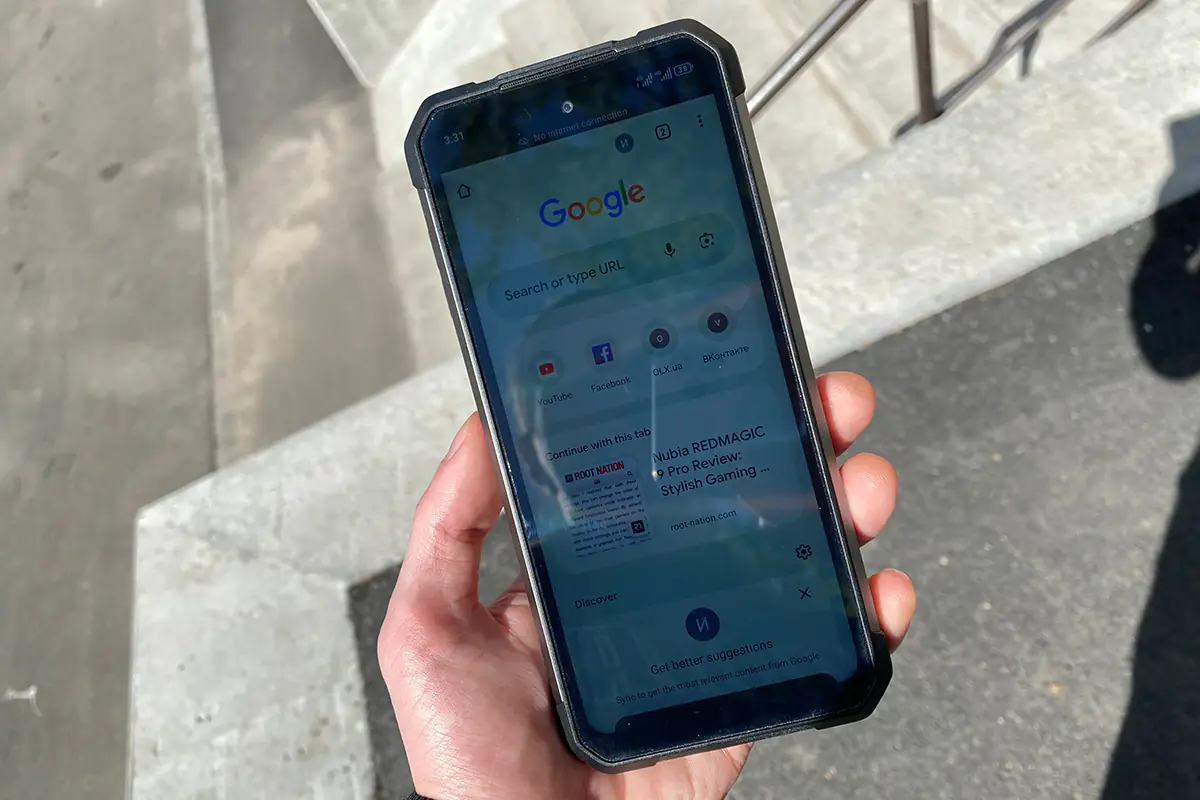
In terms of display performance, it’s good. The animation is smooth, and the response is quick. It reacts promptly to all actions without any delays. The touchscreen recognizes up to 10 simultaneous touches, which is more than enough for any task.
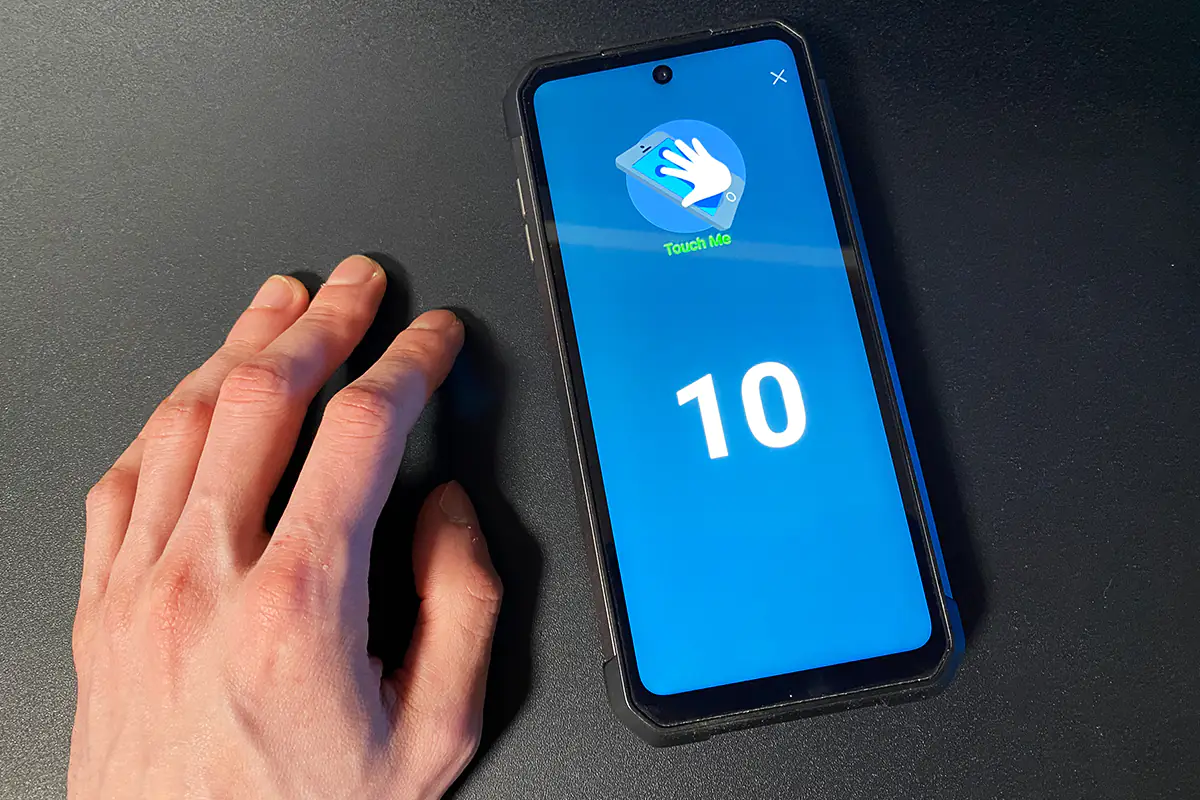 The display settings are standard. There are four refresh rate modes: 60Hz, 90Hz, 120Hz, and dynamic refresh rate. I mostly used the smartphone with the dynamic refresh rate, and it was sufficient for me. The animations were fast and smooth.
The display settings are standard. There are four refresh rate modes: 60Hz, 90Hz, 120Hz, and dynamic refresh rate. I mostly used the smartphone with the dynamic refresh rate, and it was sufficient for me. The animations were fast and smooth.
There are only two brightness settings: manual and automatic (adaptive brightness). There is a dark theme available. An adaptive sleep mode is also present, where the display remains on as long as you are looking at it. However, there are no conventional color settings available, such as color scheme or temperature adjustments.
Summing up, the display is quite decent. It’s fast, smooth, and clear, with quick responsiveness and wide viewing angles. However, the brightness is slightly lower, and the colors may lack vibrancy and saturation in some instances.
Read also:
- Oukitel WP27 Review: Solid Rugged Budget Phone
- Cubot KingKong 8 Review: А Worthy Rugged Budget Phone 3-in-1
Hardware and performance
The smartphone is powered by the MediaTek Helio G99 (MT6789) processor, an octa-core mid-range chipset announced in 2022. It features 2 Cortex-A76 cores clocked at 2.2 GHz and 6 Cortex-A55 cores clocked at 2 GHz, based on a 6-nanometer manufacturing process. Graphics processing is handled by the Mali-G57 MC2 GPU.
The TANK2 model comes with 12 GB of LPDDR4X RAM and a 256 GB UFS 2.2 storage. Currently, there is only one version of the smartphone available, which is the 12/256 GB variant.
The storage exhibits typical speeds for UFS 2.2, both in synthetic tests and in real-world usage. For everyday tasks, its speed is more than sufficient for comfortable smartphone usage. Below are the test results from AnTuTu and PCMark.
Like many modern Android smartphones, the TANK2 features a memory expansion function using virtual memory, which utilizes space on the storage. Available options range from 2 to 12 GB. If desired, memory expansion can be completely disabled. With the addition of virtual memory, the system and installed applications will operate slightly faster.
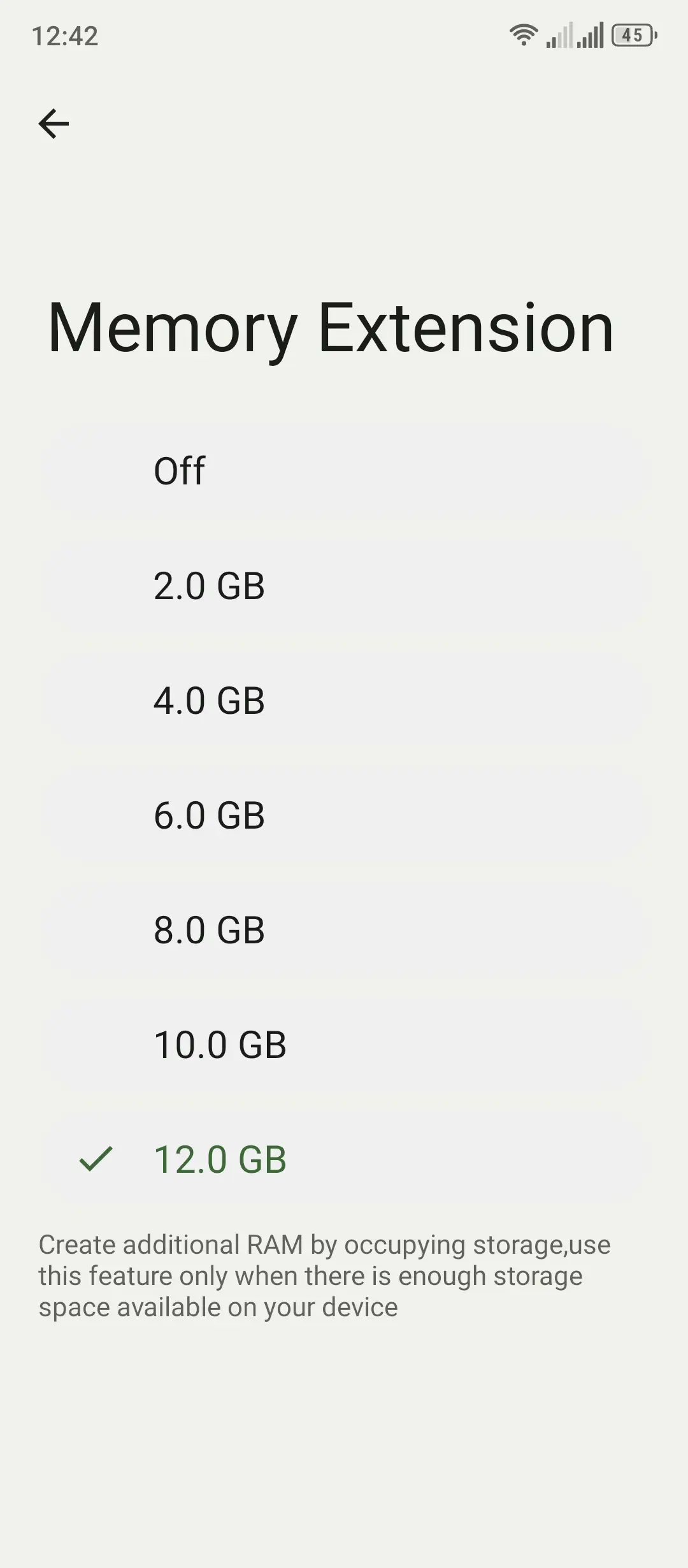
In terms of visual perception, the performance of the TANK2 is quite satisfactory. The operation of the OS and applications, installations, web surfing, video playback, and cameras all work fairly quickly. I haven’t noticed any freezes or lags during my time using it. In short, it’s comfortable to use.
As for tests and benchmarks, the smartphone demonstrates typical results for its hardware. Below, I’ll add the results obtained from Geekbench 6, PCMark, 3DMark, AnTuTu Benchmark, AiTuTu Benchmark, and CPU Throttling Test.
When it comes to mobile gaming, from experience, I can say that the Helio G99 handles them quite well. For example, less demanding games like Asphalt 9: Legends, Free Fire, and Real Racing 3 run smoothly on the smartphone at maximum graphics settings with comfortable FPS. In Diablo Immortal, you can comfortably play at high settings. However, for particularly demanding games like Genshin Impact, you may need to lower the graphics quality to achieve smooth gameplay.
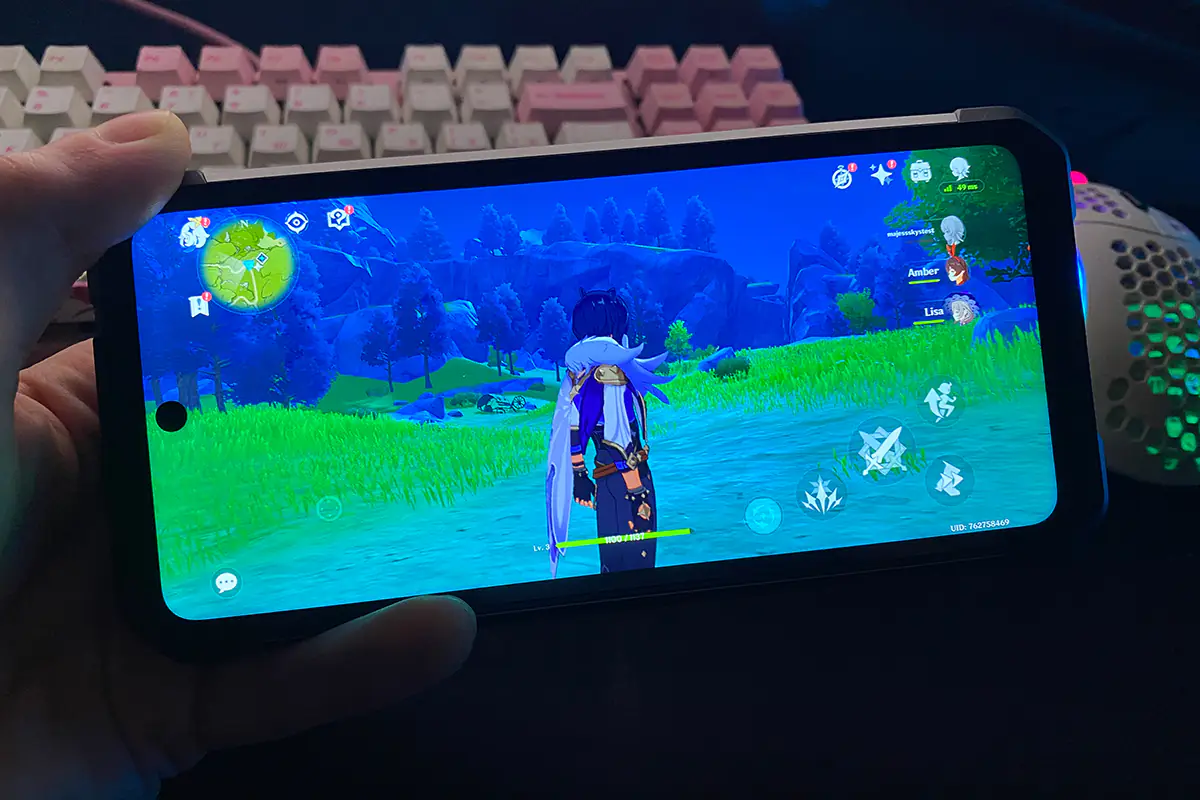
Cameras
The rear camera of the TANK2 features 3 lenses: a primary, a night mode, and a wide-angle lens. The primary lens comes with a resolution of 108 MP and an aperture of f/1.8, utilizing the Samsung ISOCELL HM2 sensor. The night mode lens boasts a resolution of 64 MP and an aperture of f/1.8, utilizing the OmniVision OV64B sensor. The wide-angle lens is 16 MP with an aperture of f/1.8, featuring the OmniVision OV16B10 sensor. The front camera has a resolution of 32 MP with an aperture of f/2.0, using the Samsung ISOCELL GD1 sensor.
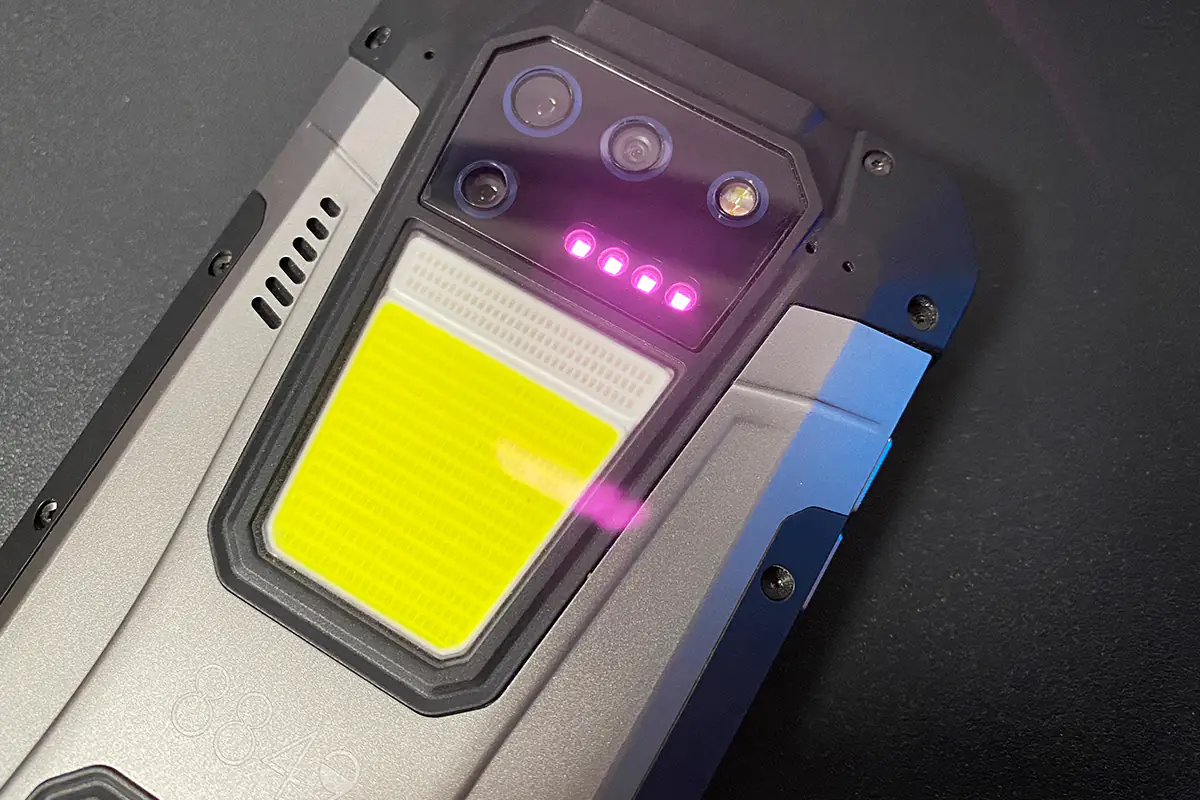 The main camera captures video at 2K@30FPS, 1080P@30FPS, 720P@30FPS, and 480P@30FPS. The front camera records at 1080P@30FPS, 720P@30FPS, 480P@30FPS, and 288P@30FPS.
The main camera captures video at 2K@30FPS, 1080P@30FPS, 720P@30FPS, and 480P@30FPS. The front camera records at 1080P@30FPS, 720P@30FPS, 480P@30FPS, and 288P@30FPS.
If we compare the smartphone with the previous model, the Unihertz Tank, we can say that we have the same cameras, except for the addition of a wide-angle lens and an updated night mode.
Camera app
The camera app of the TANK2 is straightforward. In the bottom row, you’ll find the main modes, which you can switch between by swiping or tapping on the mode name. The top row contains additional settings for the selected shooting mode.
Available photo modes include: regular photo (12 MP), portrait, night mode, pro mode, infrared photo, monochrome mode, and super resolution mode (108 MP). There is no macro mode. The camera supports HDR, but it’s only available for the regular photo mode (12 MP).
For photos in low light conditions, you can use additional illumination with the help of the flashlights. You can choose between cool, warm, or combined light. This feature is available for the regular photo mode (12 MP), super resolution mode (108 MP), and professional mode.
For videos, only the regular video mode and time-lapse are available. The maximum resolution for time-lapses is 1080P. The maximum resolution for regular videos is 2K. You cannot select the frame rate for regular videos; the camera only records at 30 FPS.
For the front camera, only regular selfies, regular video, time-lapse, and monochrome mode photos are available.
The global settings for the application and camera are mostly standard. Everything that is available is shown in the screenshots below.
The only thing that caught my eye is that for video, you can additionally choose shooting modes (scenes), which is not possible for photos.
The app works quickly and without any glitches. Modes switch swiftly, and if necessary, their arrangement can be customized as per preference. The only thing I can note is that the focusing in some modes is not instantaneous. You need to wait a second or two for the camera to focus properly.
Another thing I almost forgot to mention is the underwater camera mode. Interestingly, this setting is not found in the camera app itself. Instead, it can be located in the quick access panel and settings. From what I understand, this mode optimizes the camera for underwater shooting, allowing you to take photos and record videos. In this mode, the touchscreen display stops working, and switching between photo and video modes is done using the volume buttons. The actual shooting is initiated by the red smart button.
Photos and videos on the rear camera
In sufficient lighting, the main camera captures excellent shots. The photos exhibit good object detailing and color reproduction. Particularly impressive is the rendering of various foreground objects, such as flowers..
In the 108 MP mode, photos will have higher resolution. In the standard mode, the camera takes photos with a resolution of 4000×3000 pixels (12 MP). In the 108 MP mode, the resolution of frames increases to 12000×9000 pixels. As a result, there’s higher detail and less loss in quality when scaling frames.
Wide-angle photos come out with pale colors and blurring around the edges. To illustrate, I’ll show a few examples in both the standard and wide-angle modes.
The portrait mode is quite standard: it captures the subject in focus and blurs the background around it. Often, the camera may partially blur some details of the subject, resulting in inaccurate blurring.
Evening photography with the TANK2 presents some challenges: low detail, blurring, and glare from light sources. There are also issues with focusing. Overall, you can take photos in the evening with the TANK2, but it’s important to note that evening photography can be challenging for the smartphone.
The TANK2 features a special night mode for evening photography. This mode enhances the brightness of photos. Night mode works quite well — you can see the difference in brightness even without close inspection. However, the quality and overall detail of the images remain similar to those captured in regular evening mode.
Photos taken with the infrared camera have a unique look. In my opinion, the quality is good for this type of shooting. Objects in the foreground come out best. And a lot depends on the level of infrared illumination – by the way, it can be adjusted in the application.
In monochrome mode, the camera simply captures in black and white. The shots come out nice. I think fans of black and white photography will appreciate this mode.
There are no issues with video recording on the main camera of the smartphone. In daytime with good lighting, the videos come out of good quality, in the evening – the level of detail drops slightly, which is quite typical.




Video can be recorded on the infrared camera at a maximum of 1080P@30FPS. The video quality is good. However, it all depends on the level of infrared illumination. If it is insufficient, the frame rate will drop.

Photos and videos on the front camera
The front camera on the TANK2 is decent. Like the main camera, it captures well in sufficient lighting but details suffer in the evening. On the plus side, selfies retain natural skin tone and color reproduction. On the downside, there are few available modes.
The situation with video recording on the front camera is similar to that of photos. Overall, it can be said that the front camera captures videos decently, especially during the day in good lighting conditions.
Read also:
- Blackview BV6200 review: A rugged smartphone, speaker and power bank
- Cubot KingKong Star review: A rugged smartphone with an extra screen
Sound
The smartphone is equipped with a 1.5 W speaker, making it quite loud. As for sound quality, it can be described as decent. There are bass tones, but high frequencies still prevail. At maximum volume, there’s a slight distortion in the speaker. Watching movies, listening to podcasts, or browsing YouTube is comfortable, but preferably at maximum volume. For music, it’s better to use headphones or earphones. The smartphone has a standard 3.5mm mini-jack for wired headphones/earphones. For wireless devices, it supports AAC, SBC, and LDAC codecs.

When it comes to the earpiece speaker and microphone, there are no complaints here. While the smartphone was in my testing, I used it as my primary device for calls. During calls, I could hear the other party loudly and clearly, and they could hear me as well.
Communications and wireless technologies
The smartphone supports 2G, 3G and 4G. The supported bands are as follows:
- 2G GSM: 850/GSM900/DCS1800/PCS1900
- 3G WCDMA: B1/2/4/5/6/8/19
- 4G LTE FDD: B1/2/3/4/5/7/8/12/13/17/18/19/20/25/26/28A/28B/66
There is no support for 5G and eSIM. By the way, if 5G support is needed, then you should consider the TANK3 or TANK3 Pro models. They are more expensive and technologically advanced models with 5G support and more. As for the connectivity quality of TANK2, I can say it’s standard. Both SIM cards support 4G simultaneously. The signal level is good and stable. Overall, no complaints.

The smartphone features Wi-Fi 5 and Bluetooth 5.3 for wireless connections. NFC is available for contactless payments. There were no issues with wireless connections either. Wi-Fi networks are detected quickly, and the connection speed is normal.
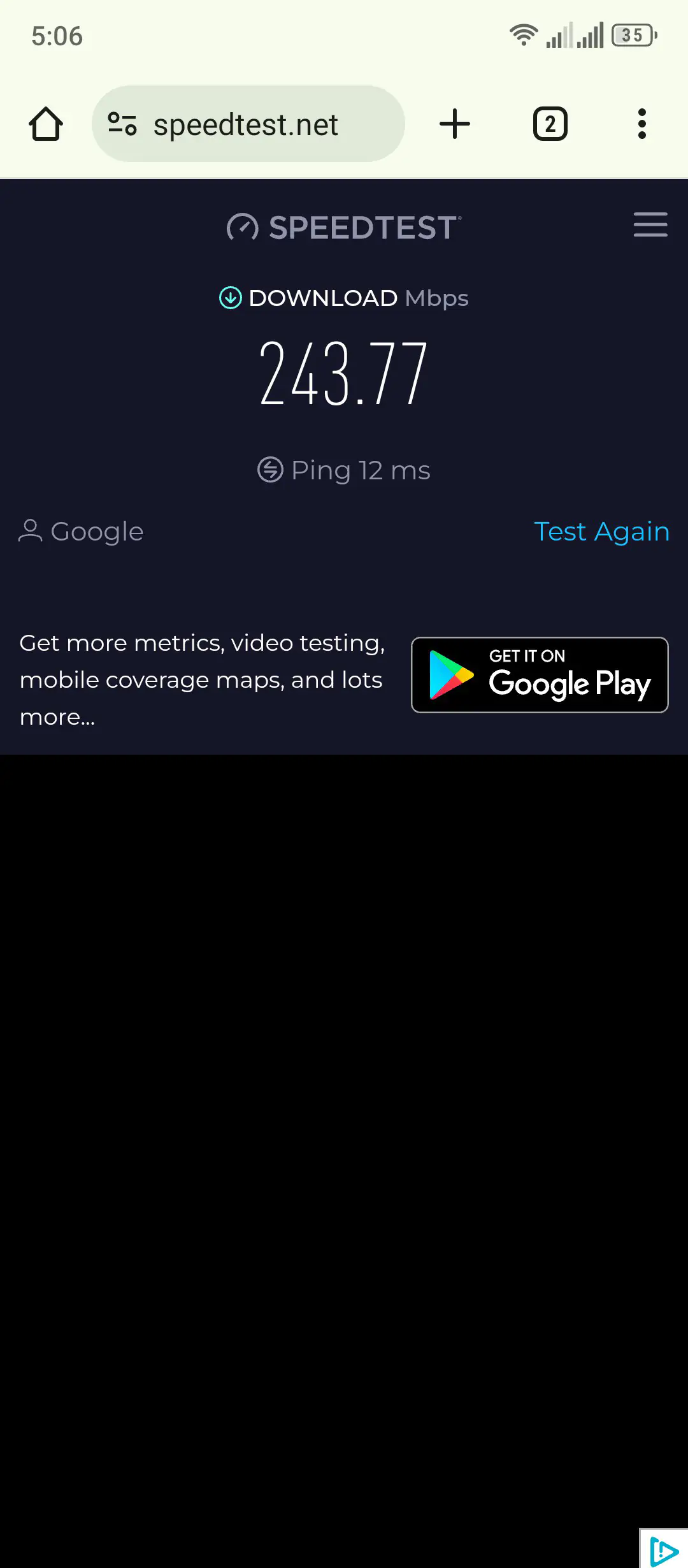
Wireless devices also connect without any problems. The supported location services are standard: GPS, GLONASS, BeiDou, and Galileo.
Read also:
Software
The smartphone runs on pure Android 13. There are no changes or modifications to the OS.
There are not many pre-installed apps—just the basic minimal set from Google. The exception is a set of tools commonly found in rugged smartphones: compass, sound meter, level, protractor, barometer, and so on. Among other things, you can also find a menu for controlling flashlights and beacons.
 The settings and OS menu are also standard. The only non-standard features are the menu for smart buttons and the projector.
The settings and OS menu are also standard. The only non-standard features are the menu for smart buttons and the projector.
Navigation in the system can be done using either the three buttons or gestures. Unlocking can be done using a password, pattern, PIN, fingerprint, or face. Unlocking with fingerprint and face recognition works without any issues — quickly and accurately.
The operating system runs smoothly. I haven’t noticed any bugs during the entire testing period.
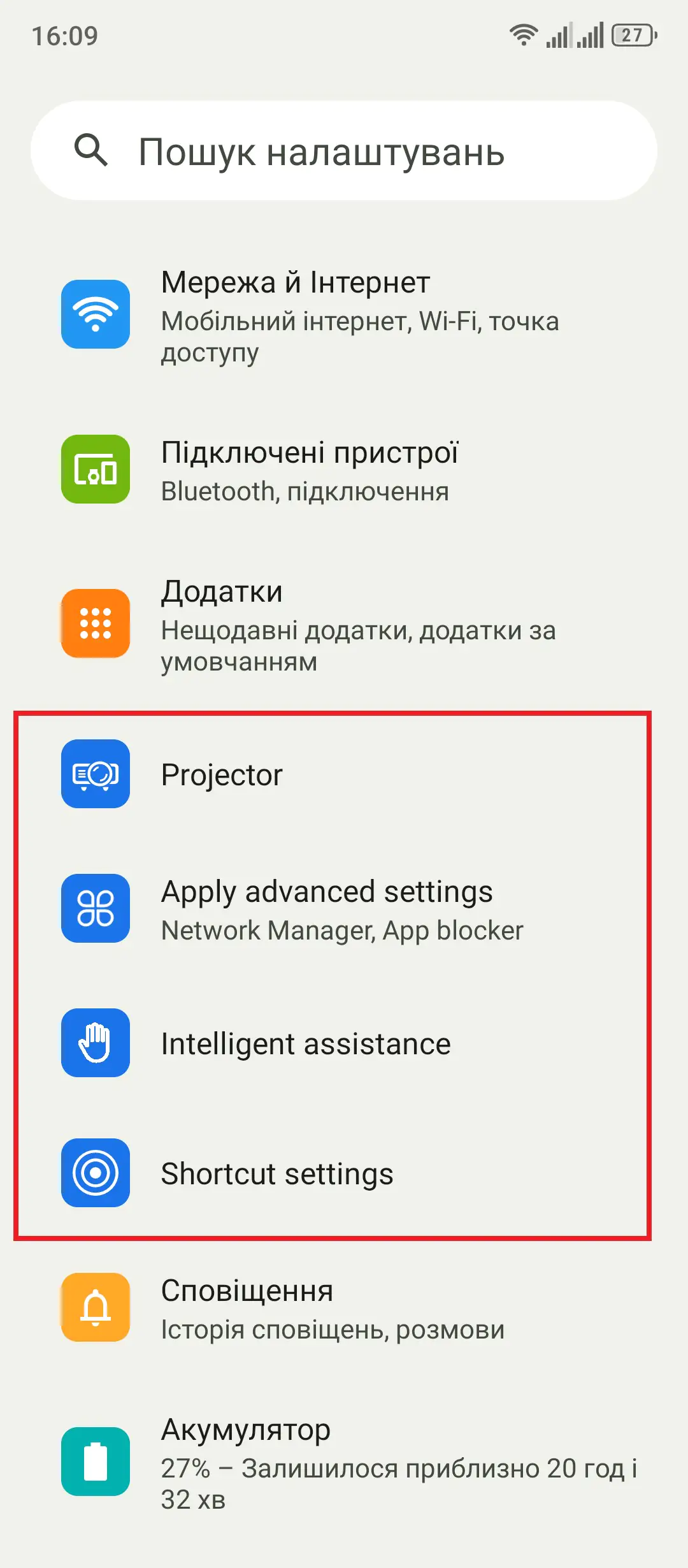
Battery life
The smartphone is equipped with a 15500 mAh battery. By the way, the previous model had a 22000 mAh battery. The package includes a 66W charger.
With the included charger, the smartphone charges up to 50% in 41 minutes. A full charge takes 1 hour and 46 minutes.
As for battery life, it’s excellent. However, I wasn’t able to properly test the smartphone with the Work 3.0 Battery Life test in PCMark. I ran the test twice, and both times it either froze or closed right at the end without showing any results.
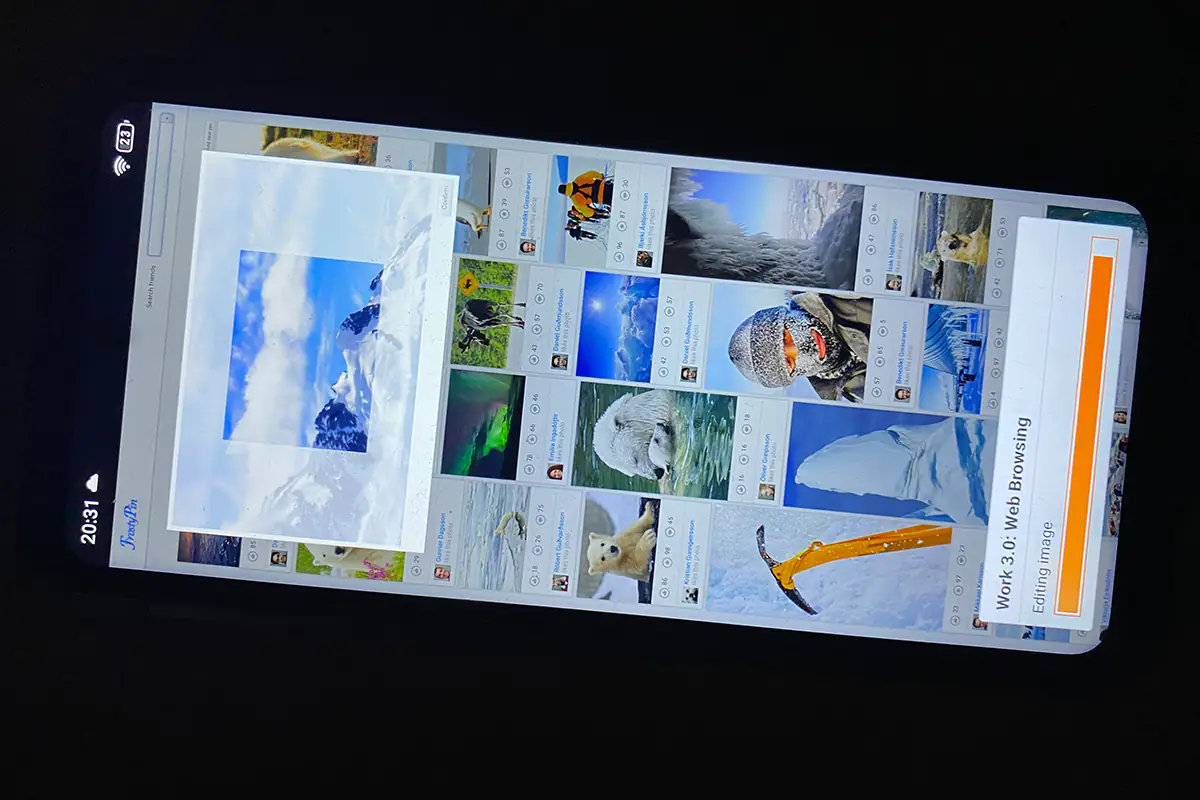
From the very beginning, I had suspicions that the test might not be tailored for the level of autonomy this smartphone offers. That’s why I also independently tracked its usage time in parallel.
First test of battery life
- April 24, time 21:00 – start, charge 100%
- 26.04, time 07:23 – the test froze at 07:23, the remaining charge is 26%
- the result is approximately 34 hours of continuous operation
Second test of battery life
- 02.05, time 14:20 – start, 100% charge
- 03.05, time 20:56 – the test closed by itself, the remaining charge is 22%
- the result is 30 hours of continuous operation
In summary, we have 30 to 35 hours of continuous stress testing with an additional 20% charge remaining. Presumably, the test was meant to demonstrate a result of around 40 hours of autonomous operation (perhaps even more).
As for everyday autonomy, the smartphone is equipped with three batteries, each with a capacity of 5000 mAh. This is a standard capacity for a typical smartphone today. A regular smartphone with a 5000 mAh battery can comfortably last 1 to 2 days, depending on usage intensity. With TANK2, these figures can be confidently multiplied by three. In regular usage mode, TANK2 can last anywhere from 3 to 6 days on a single charge, which can be considered an excellent level of autonomy.
In addition to everything else, TANK2 supports reverse charging. You can use it to charge other gadgets with a maximum power output of 10 watts.
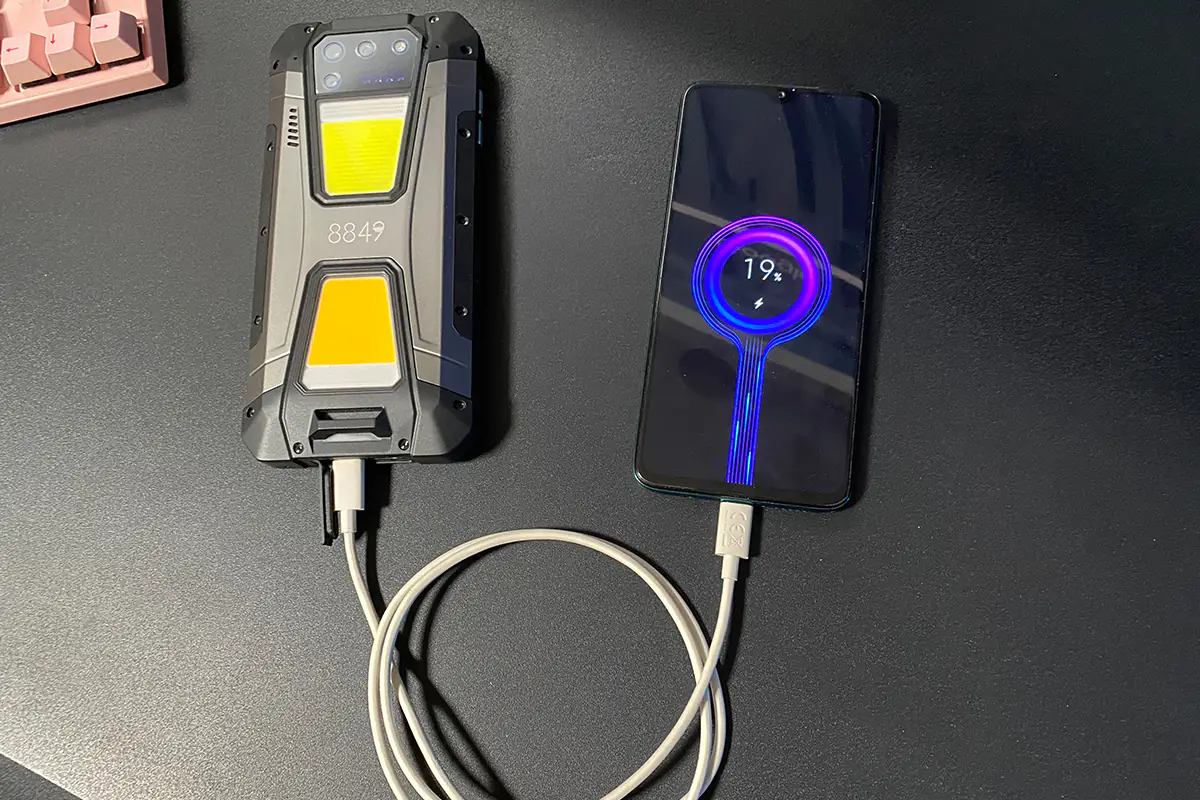
Conclusions
Summing up, it can be said that the new TANK2 model has turned out to be successful, intriguing, and unconventional. Among the positives, I would note the quality assembly and ruggedness of the smartphone, its original design, good performance, and excellent battery life. The projector demonstrates decent image quality. Honestly, I didn’t expect anything special from it at first, but it pleasantly surprised me later on. The flashlights and beacons are good: powerful and bright. A reliable source of bright light will definitely come in handy on a hike or outing. The display is simply good. Adding a bit more brightness to it would make it ideal. As for the contentious points, I can only mention evening photography on the main camera. It feels like the smartphone struggles with evening photography, especially with photos. Otherwise, it’s an excellent device that I wouldn’t hesitate to recommend.
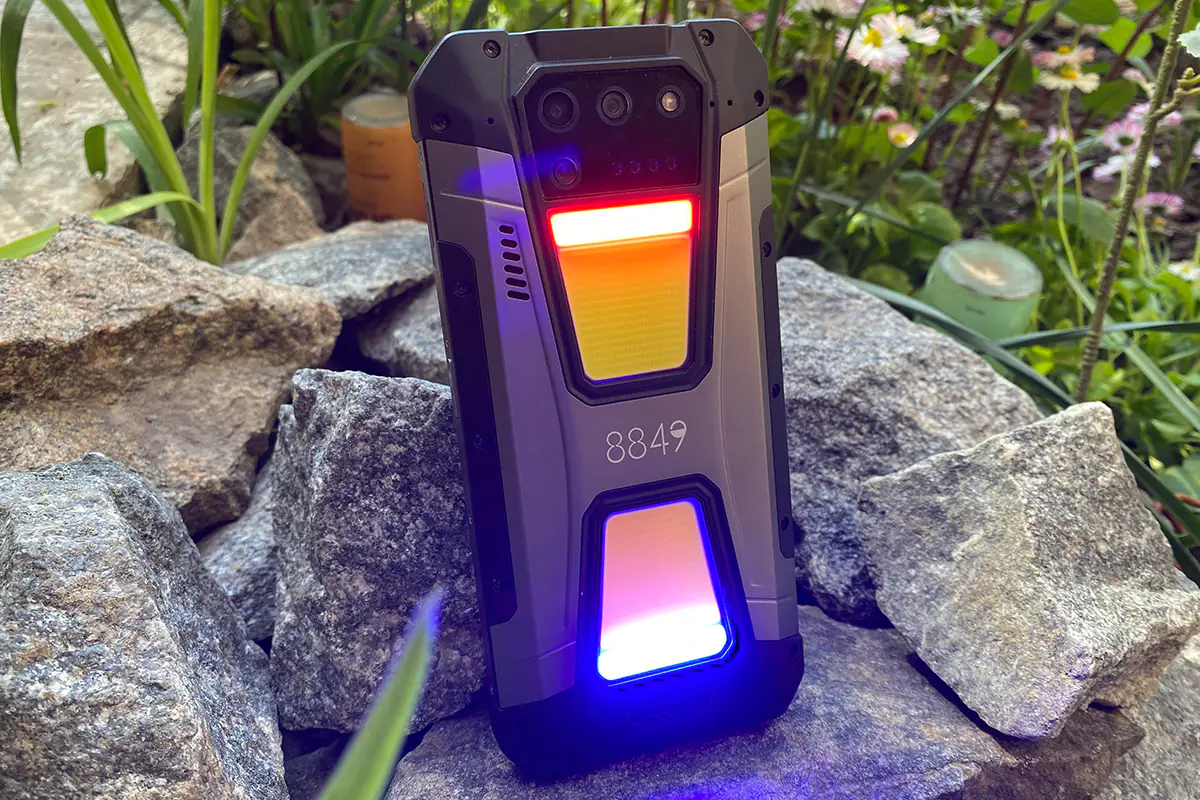
Read also:
- Nubia REDMAGIC 9 Pro Review: Stylish Gaming Smartphone
- Motorola Moto G24 Review: Stylish Budget Phone
- Top 10 Most Important Known Military Satellites
Where to buy




